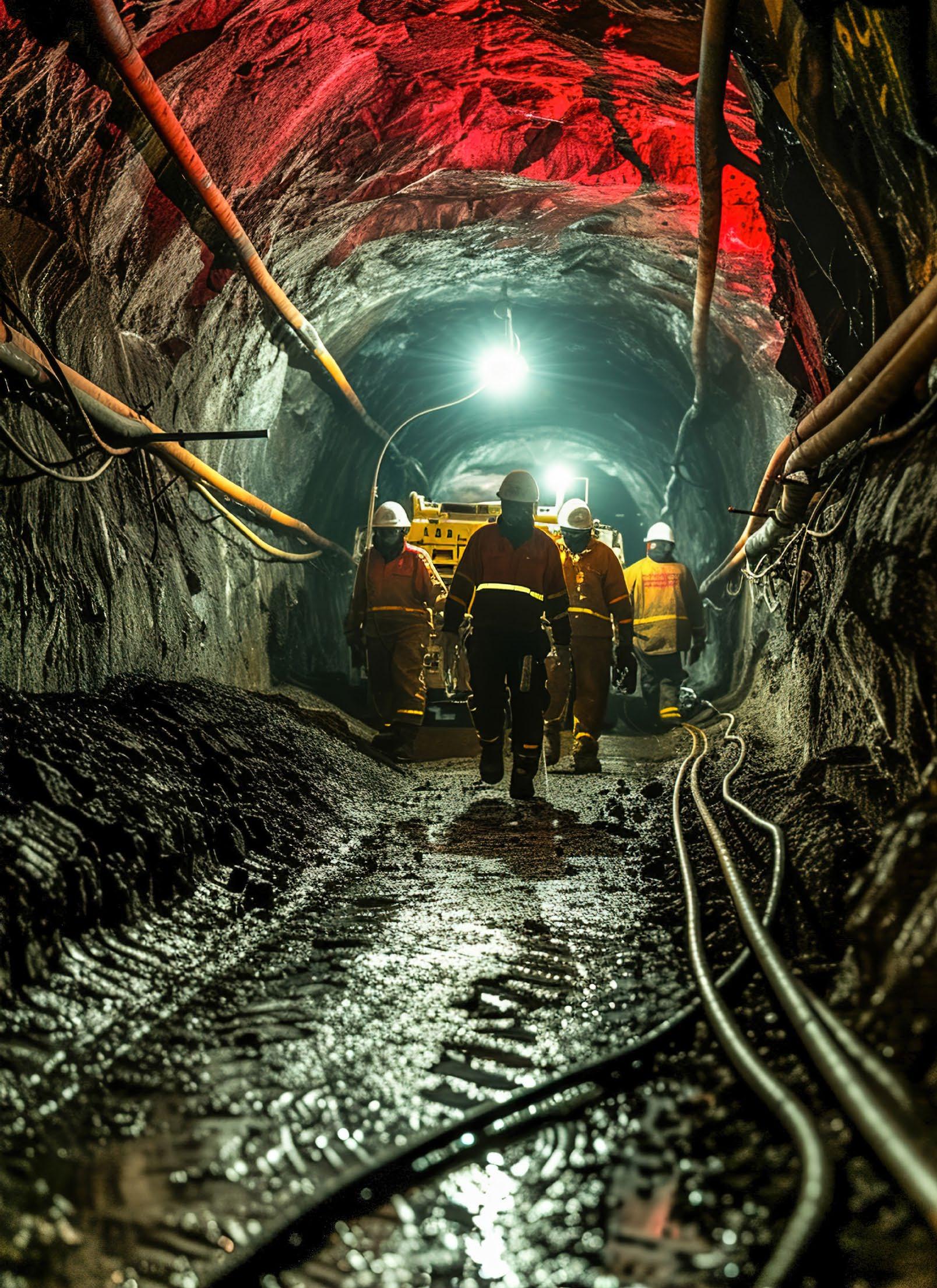INSIDE MINING ) ( forwards
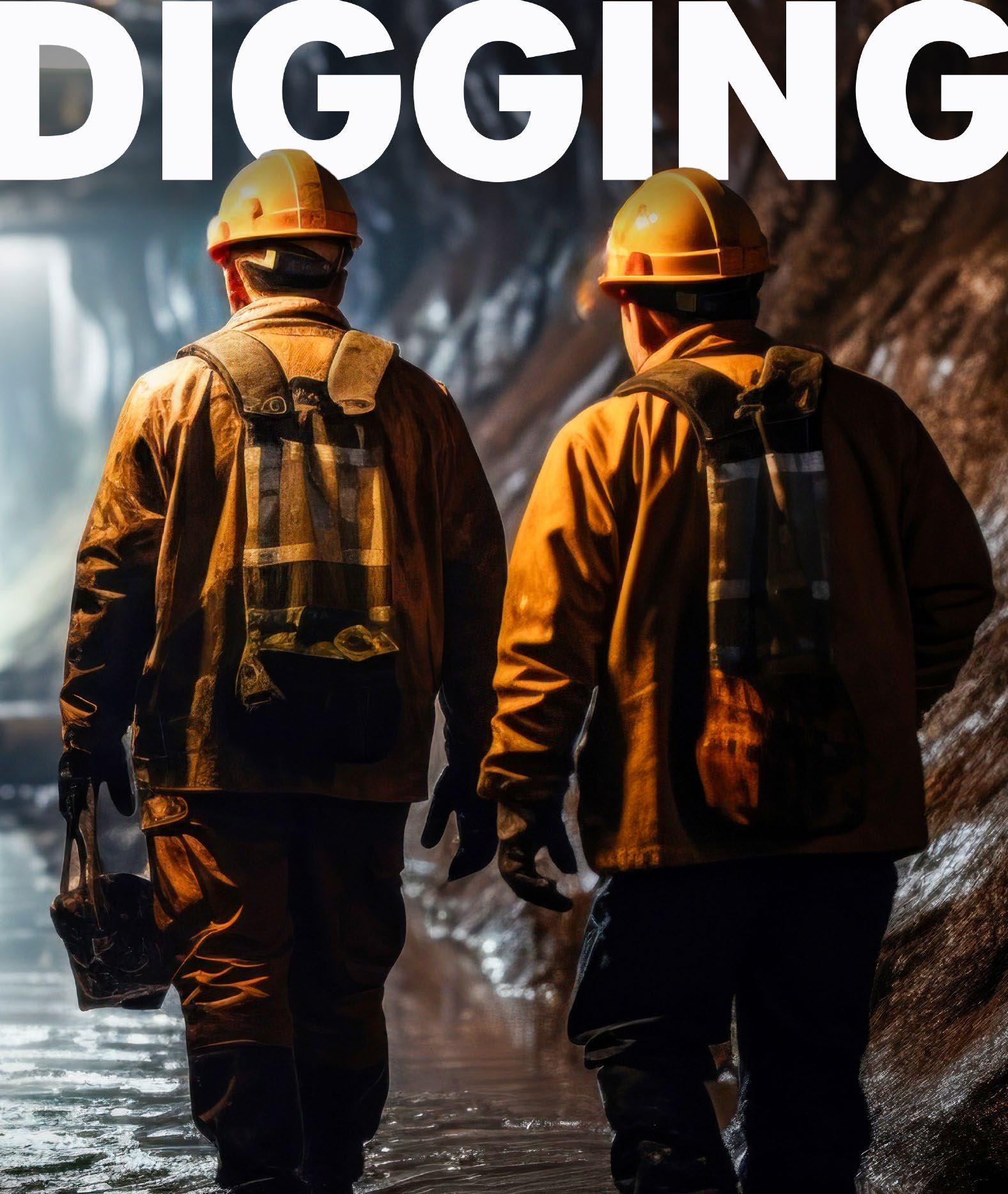


















– Phil Nicholls Editor –
Hello, and welcome to the preview edition of Inside Mining. It is very exciting to start a new project, as we add a new title to our portfolio of magazines at Proactive Publishing.
Inside Mining offers us new opportunities for digging into this industry that plays such a crucial role in the global economy. So much of our technology, and even the fabric of the modern world, began as a raw material produced by the mining sector. I am sure that this will be a highly-informative journey.
By way of introduction to this varied and complex industry, I am pleased to share with you a brief selection of news and articles within this preview. This is all representative of the coverage you can expect to find within the pages of Inside Mining, once it launches in early July.
For this special preview edition, we have compiled an overview of MINExpo 2025, held at the Las Vegas Convention Center, along with a special report exploring the role of women in the mining industry.
Alongside our news coverage, we also present for you a handful of company
profiles. These showcase four companies from around the world, from Chile to China, via Spain and Australia. Yet, this is only scratching the surface of this varied sector and only a taster for what you will see in the forthcoming issues of Inside Mining.
Looking to the future, I urge you to follow the progress of the magazine on our dedicated Inside Mining website. In the meantime, our fantastic production team is busy researching topics and setting up interviews with a broad range of companies.
As we start planning the content of the launch issue of Inside Mining, I am sure you will not want to miss it. I look forward to seeing you in July. n

Latest developments from the Australian industry
The successful passing of the Critical Minerals Production Tax Incentive (CMPTI), in the Australian Senate in February was a monumental moment for Australia. This provides a strong and clear endorsement of the importance the critical minerals sector plays now and will play well into the future.
The Association of Mining and Exploration Companies (AMEC) congratulated the Federal Government for passing the CMPTI, as part of the Future Made in Australia (Production Tax Credit and Other Measures) Bill 2024.
“This is the first time any Australian Government has put its money where its mouth is for the critical minerals industry,” said Warren Pearce, AMEC Chief Executive Officer. “The CMPTI is a powerful strategic lever that provides the foundation for the Future Made in Australia ambitions of the country. It’s also the largest ever commitment from an Australian Government to critical minerals.”
Working with member companies, AMEC commissioned a report by Mandala Partners into production tax credits. From there the tax incentives were developed for the critical minerals sector. This report, along
with over 12 months of consultation with Resource Minister Madeleine King, Treasurer Jim Chalmers, the Treasury, the Opposition, the Greens, backbenchers and other key stakeholders, formed the basis for what the Federal Parliament passed.
“This is a proud moment for our Association, our members and the broader industry, who have welcomed this initiative,” continued Mr Pearce. “Important projects worth billions of dollars will be supported by this $17 billion package. It will also serve as an important job creator for regional Australia.”
This AMEC-led incentive will help strengthen Australian supply chains and lead to job creating opportunities across the country. AMEC looks forward to working with the Treasury and the Australian Tax Office, to ensure the actual detail of this new policy works for everyone. n
Latest developments from the Brazilian industry

Anglo American plc has announced that it has entered into a definitive agreement to sell its nickel business to MMG Singapore Resources Pte. Ltd, a wholly owned subsidiary of MMG Limited for a cash consideration of up to $500 million.
The nickel business comprises two ferronickel operations in Brazil – Barro Alto and Codemin – and two high quality greenfield growth projects – Jacaré and Morro Sem Boné.
The agreed cash consideration of up to $500 million comprises an upfront cash consideration of $350 million at completion; the potential for up to $100 million in a price-linked earnout; and contingent cash consideration of $50 million linked to the Final Investment Decision for the development projects.
“The sale of our nickel business after a highly competitive process marks a further important milestone towards simplifying our portfolio to create a more highly valued copper, premium iron ore and crop nutrients business,” said Duncan Wanblad, Chief Executive of Anglo American.
Anglo American’s nickel business is well positioned to serve both the stainless steel and battery value chains. The business comprises the operating assets of Barro Alto mine, Niquelândia mine and the ferronickel processing plants at Barro Alto and Codemin,
which together produced 39,400 tonnes of nickel in 2024; and two high-quality greenfield growth development projects: Jacaré with c.300Mt of mineral resources, and Morro Sem Boné (MSB) with a total potential mineralisation of 65Mt. Barro Alto is the only nickel mine in the world certified by the Initiative for Responsible Mining Assurance, having achieved the IRMA 75 level of assurance in 2024.
The transaction is subject to a number of conditions, including customary competition and regulatory clearances. The upfront cash consideration is subject to normal completion adjustments and completion is expected by Q3 2025. n
We would love to hear your answers, so send an email over to our Editor, Phil Nicholls.
news from around the mining industry

Québec Innovative Materials Corp (QIMC) and Q Precious & Battery Metals Corp (QMET) have announced a strategic work programme to explore and develop the Matane Natural Hydrogen Project, located in the Appalachian region of Québec. This initiative leverages QIMC’s cutting-edge expertise in hydrogen exploration and geological resource characterisation to unlock the project’s full natural clean hydrogen potential.
“As we advance our flagship St-Brunode-Guigues Natural Hydrogen Project, we have already recorded hydrogen concentrations exceeding 7,000 parts-per-metre at shallow depths of 50 metres,” said John Karagiannidis, CEO of QIMC. “We are now implementing deeper precision drilling to evaluate the extent and continuity of this hydrogen-rich system. This marks the first time we have encountered these specific lithologies, particularly potassic-bearing units, which play a key role in the radiolytic formation of natural clean hydrogen at depth.”
This programme between QIMC and QMET reflects a shared commitment to positioning
Québec as a leader in clean natural hydrogen exploration – a clean and renewable energy resource. The project aligns with a sustainable development strategy, leveraging Québec’s unique geological advantages while ensuring a minimal environmental footprint.
“The Matane Project presents a unique opportunity to apply our expertise to a highly promising geological setting,” explained Mr Karagiannidis. “Our scientific approach and use of advanced geophysical technologies will allow us to efficiently explore the natural hydrogen potential of this region.”
Richard Penn, President of QMET, added: “Our collaboration with QIMC is focused on implementing cutting-edge exploration methodologies to maximise discovery and evaluation of natural clean hydrogen resources in this strategic region.”
This programme between QIMC and QMET reinforces both companies’ commitment to exploring and developing strategic natural clean resources, paving the way for a new era in the natural clean hydrogen industry in Québec and North America. n
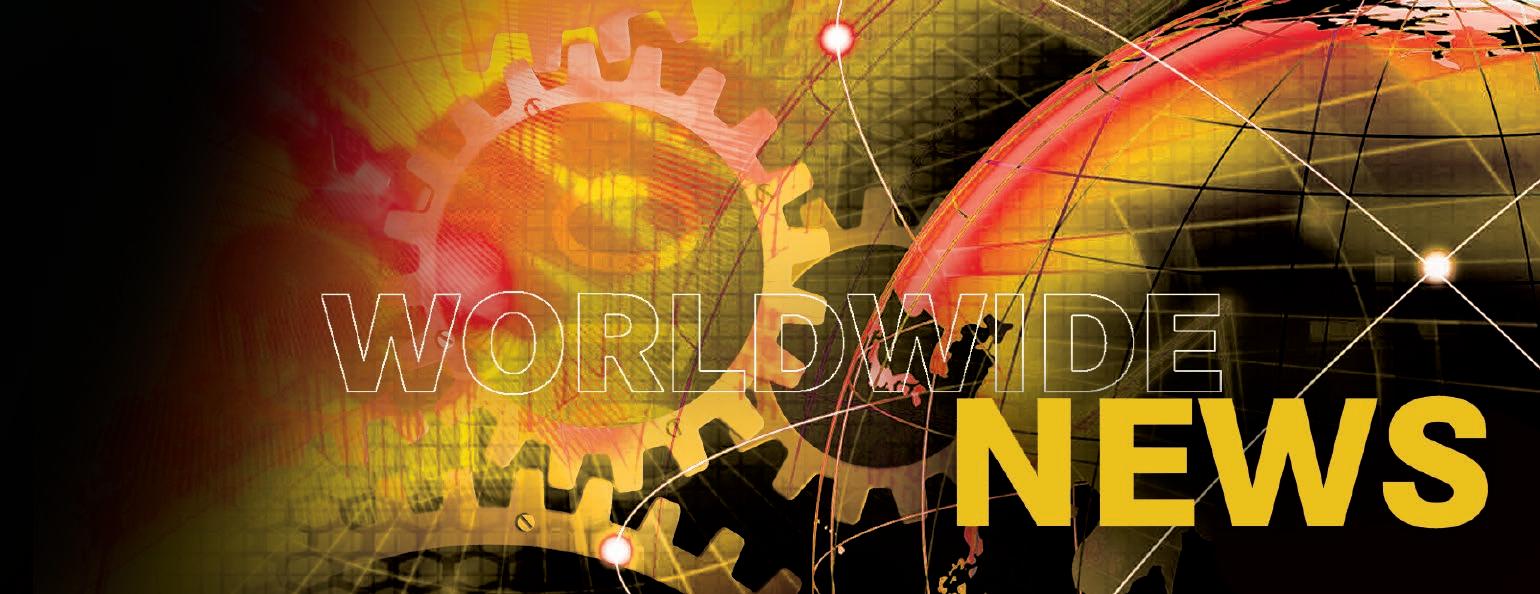
Vale and Caterpillar have signed a new, five-year global framework agreement, to strengthen the collaboration between the two companies. Among the objectives are increased focus on productivity and innovation, including carbon reduction initiatives.
The companies also reaffirmed their commitment made in April 2024 to cooperate towards development of a dual-fuel haul truck, powered by diesel and ethanol. Vale also intends to test a battery electric haul truck and the Cat© Dynamic Energy Transfer System (DET) under development by Caterpillar.
“The framework agreement represents an evolution in our relationship with Caterpillar, amplifying our focus on maximising the performance of Vale’s assets and allowing us to advance on our decarbonisation path in an economically responsible way,” said Marco Braga, Vale’s Procurement Director.
“The agreement with Vale reflects our commitment to developing solutions that support our customers’ operational and sustainability goals,” said Denise Johnson,
Group President of Caterpillar’s Resource Industries segment.
On average, diesel fuel use in Vale’s operations is responsible for 15% of the company’s direct CO2e emissions. The adoption of more sustainable technologies is part of a strategic plan to mitigate environmental impacts while maintaining competitiveness.
The dual-fuel haul truck to be powered by ethanol and diesel that is under development by Caterpillar would initially equip trucks capable of carrying 240 tonnes of ore. In the future, the technology may be extended to trucks with a capacity of 320 tonnes. In total, there are more than 150 of both models in operation at Vale. Initial testing is to be completed at Caterpillar’s facilities in the United States followed by additional validation and testing of dual-fuel trucks at Vale’s operations.
“Decarbonisation is a major challenge today, which will only be overcome by investing in solutions such as alternative fuels and electrification to reduce emissions without compromising efficiency and safety,” explained João Turchetti, Vale’s Decarbonisation Engineering Director. n

Inside Mining presents an overview of Women in Mining UK

Founded in 2006, Women in Mining UK (WIM UK) advocates and speaks for women in the mining sector, informing industry participants of the challenges and opportunities women find in pursuing careers in mining companies and other mining-related businesses. Hannah Barnett investigated further.
Through partnerships with leading mining companies and other industry participants, WIM UK provides thought leadership, analysis and research on the business case for diversity, inclusion and the economic advancement of women in the sector.
WIM UK offers a strong network which is used to progress professional goals and career aspirations. Membership is free and open to anyone, regardless of gender or location.
Through the institute’s work with universities and other organisations, WIM UK promotes the role of women in the mining industry and externally raises awareness of mining as a career choice for women.
WIM UK celebrates and shares female success stories through its social media channels and with the ‘100 Global Inspirational Women in Mining’, known as the WIM100. The latter is a biennial publication that highlights the wealth of female talent within the global mining industry, celebrates
women’s ‘above and beyond’ contributions to the industry and identifies role models for future generations.
2024’s edition included women finalists from 41 countries, compared to 40 in 2022 and 32 in 2020. This is also a significant increase from the 15 countries that took part when the initiative began in 2013, demonstrating the now global reach of the WIM100.
All of the WIM100 editions are described on the WIM UK website as “a living history of women who work in mining around the world.
“Through their stories, they show how they have persevered in the face of adversity,” the website continues, “how they have found solutions to challenges, and how they are empowering others by being a voice for a more successful and sustainable mining industry. Their stories provide inspiration and valuable insight for all.”
These publications highlight the incredible diversity of talent in mining. WIM UK believes that recognition and celebration of such inspirational women and their stories are integral to changing attitudes in the sector.
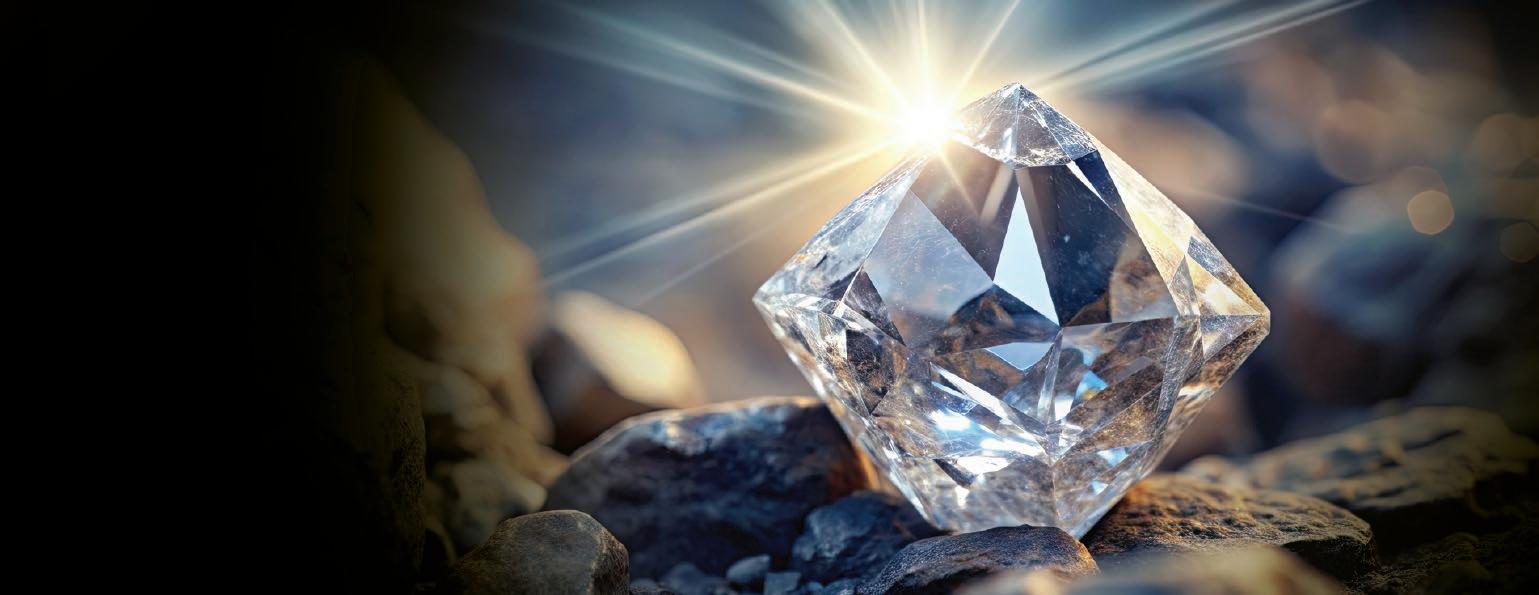
Other partnerships include industry, pro-bono and strategic collaborators. Organisations like Anglo American, Glencore and EY provide financial and strategic backing to WIM UK, while others contribute professional development opportunities.
WIM UK also works with media and conference partners to amplify its mission. The organisation has been running the hashtag #WIMvoice, promoting greater visibility for women in mining on the global conference circuit. The network is also working closely with leading global conference and event organisers to ensure diversity of panels and to encourage more female speaker representation, showcasing the breadth and depth of female professional talent.
WIM UK has already successfully partnered with a number of conference organisers to broaden their diversity of speakers including: Mining Indaba, FT Commodities, Mines and Money Asia, LME Week, Mines and Money London, International Mining and Resources Conference (IMARC), and the Arab and African Mining Conference.
WIM UK’s Global Outreach Committee forges strong collaborative relationships with other Women in Mining groups, industry associations and government bodies. The goal is to support
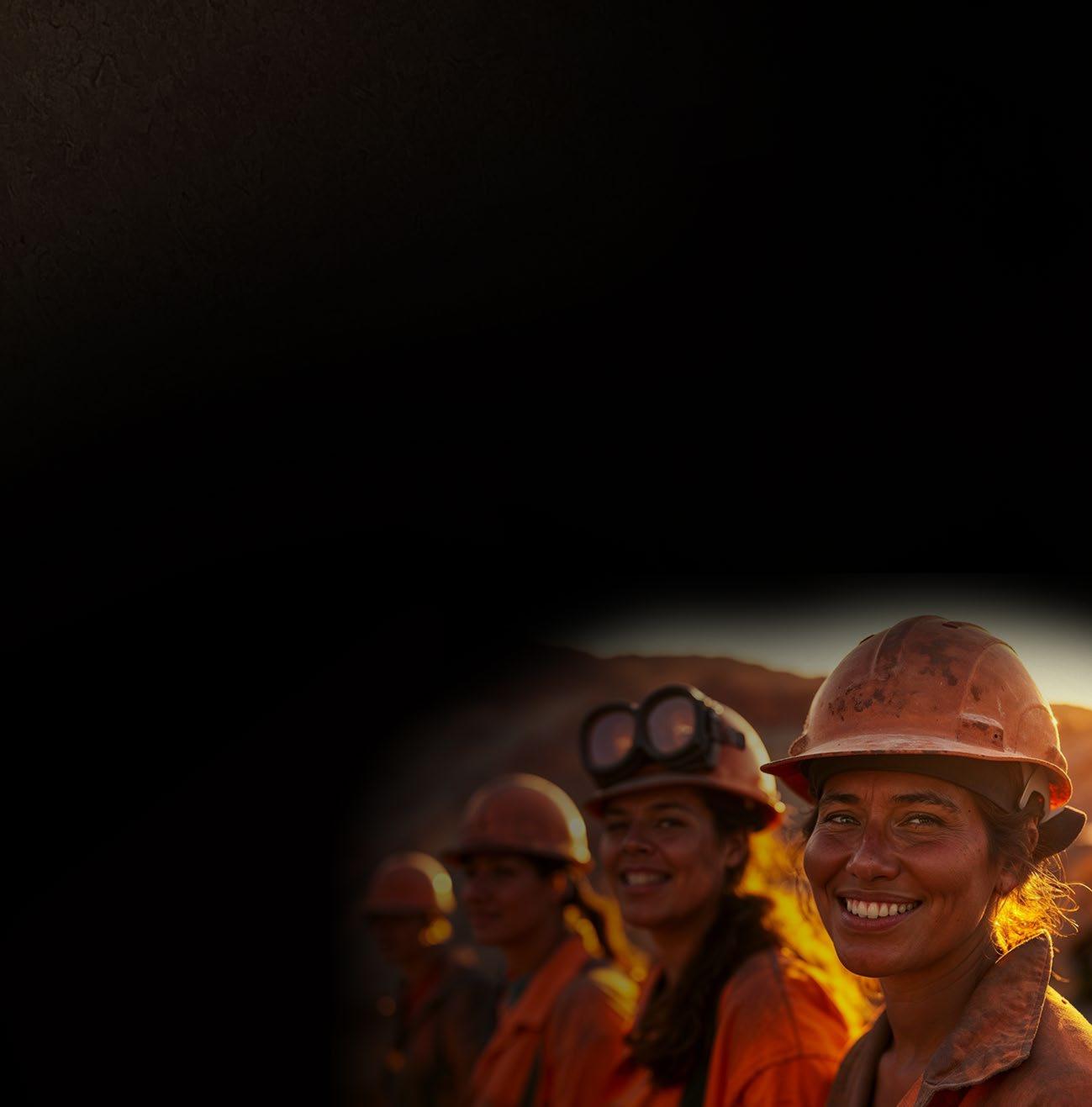
the development of sustainable diversity and inclusion best practices in the global mining industry, as well as to develop opportunities for networking. In addition, WIM UK also supports the establishment of new grassroots national and regional women in mining groups, to provide a stronger voice and greater visibility to women in the industry. It is clear that Women in Mining plays a crucial role in fostering gender diversity and inclusion within the global mining industry. Through partnerships, advocacy and professional development initiatives, women’s career growth is supported and industry norms challenged. This all contributes to a more inclusive and innovative mining sector. n
An overview of MINExpo.

For more information, www.

Running from September 22nd to 24th, MINExpo 2025 will be held at the Convention Center. Owned and produced by the National Mining Association, MINExpo brings professionals, experts and decision-makers from the global mining industry together to collaborate, learn and engage.
Only MINExpo, the world’s largest mining event, connects visitors to the full range of innovations that are transforming the sector. With a focus on all things mining (and only mining), this event delivers a chance to glimpse the future of the industry. As the event offers access to technical staff that can answer questions in real time, visitors will get the necessary information to make smart purchasing decisions.
Whether a business is focused on site development or processing and preparation, MINExpo will offer the opportunity to explore cutting-edge technology, including sensors, AI and robotics. Visitors will be able to purchase equipment, parts and services from a global network of suppliers and manufacturers.
MINExpo also offers the chance to share ideas with people facing the same operational issues and get ahead of industry trends and changes that impact the day-to-day business of the sector.
The National Mining Association (NMA) is the only national trade organisation that serves as the voice of the US mining industry and the hundreds of thousands of American
workers it employs. NMA works with Congress, the federal agencies, the judiciary and the media, advocating for public policies that will help America fully and responsibly utilise its vast natural resources.
The association works to ensure America has secure and reliable supply chains, abundant and affordable energy, plus the American-sourced materials necessary for US manufacturing and economic security, all delivered under world-leading environmental, safety and labour standards.
Under the leadership of the NMA, MINExpo brings together professionals, experts and decision-makers from the global mining industry to collaborate, learn and engage. This is the world’s largest mining show and the place to discover new solutions for every element of mining operation, from the latest processing equipment to productivity-enhancing technology.
On the show floor, visitors will have the opportunity to meet leading manufacturers, global suppliers and cutting-edge startups.
information, please visit: www.minexpo.com

In attendance will be companies specialising in material handling, mining equipment, auxiliary equipment, drilling, engineering construction and many other categories.
The exhibition floor is spread across three halls and will feature 1,900+ suppliers showcasing over 800,000sqft of exhibits. For a truly global meeting, the event expects to draw in around 16,000 attendees from outside the United States.
Conference MINExpo is the place for industry heavy hitters. Alongside the impressive selection of exhibitors, the event also features a broadranging conference programme. This is where visitors will find major industry players,

transformative ideas and all the latest innovations in one place. Since MINExpo is focused on every aspect of mining, visitors will have the opportunity to create an individual experience tailored to their unique needs, all while gaining a big-picture view of the industry.
A highlight of the varied conference programme is the star-studded speaker series, featuring leaders who will share their unique perspectives, experiences and secrets for success. Only certain registration categories will gain access to these inspiring presentations.
As seating is limited, it is vital that visitors carefully choose their registration type to ensure maximum benefits from attending MINExpo. n

seven continents – many minerals – one voice

A selection of detailed company profiles from within the mining sector
The Marimaca Copper Project has been recognised as one of the most important copper discoveries globally in recent years. Chief Sustainability Officer Laura Rich described the unique features of the project, not only in terms of its production potential, but also regarding its reduced impact on the environment.
Copper was one of the first metals ever extracted and used by humans, and it has made vital contributions to sustaining and improving society since the dawn of civilisation. Today, copper is prized more than ever as an essential material for the energy transition and electric future. As the globe moves toward net-zero energy production, the demand for copper is expected to rise sharply. On the supply side, a deficit is forecast in the coming years due to declining production, a lack of new mine development and a lack of large-scale exploration successes to replace existing depleted copper reserves. Hence, new copper discoveries are critical.
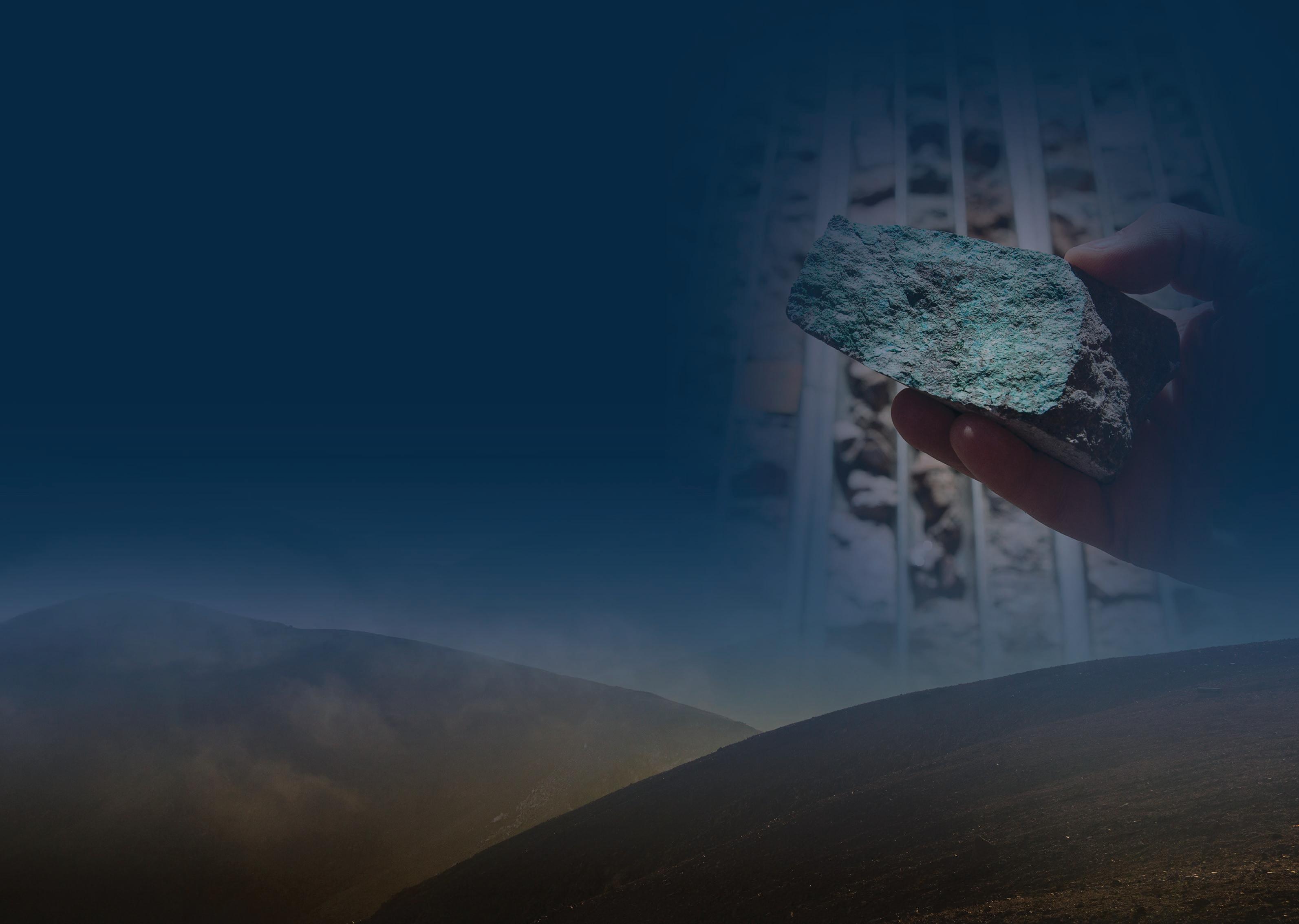
One of a kind
Marimaca Copper is a TSX-listed copper company focusing on developing its flagship asset, the Marimaca Copper Project in Chile’s Antofagasta region. The mine location itself presents a significant advantage –Marimaca will be developed as an open-pit copper mining project located in the coastal belt at low elevation, approximately 45km north of Antofagasta and 25km east of the port of Mejillones.
The project is an all-oxide copper deposit, with straightforward and established processing requirements, that should only require relatively low capital investment for development. The project also benefits from
first-class existing infrastructure, logistics and utilities nearby, further reducing execution risk.
The project also benefits from certain unusual considerations from the environmental point of view, according to Chief Sustainability Officer Laura Rich: “The Marimaca project does not require a tailings storage facility, which is a significant benefit not only from an environmental perspective, but also from health and safety and risk management perspectives.”
But that is not the only environmental benefit of the project, she explained: “Over the past couple of years, one of our key focus

areas has been to secure access to a long-term water supply for future operations. In Chile, water scarcity is a big issue in a water management context, and there are certain key restrictions that will increase over time. As a result, we have been looking at processing techniques that essentially use untreated seawater, as opposed to groundwater or desalinated water, for processing within future operations.”
To this end, the company entered into a water option agreement with a major electricity supplier based in Mejillones. The arrangement provides Marimaca with access to recycled seawater used in the
utility’s cooling plant, which Marimaca will reutilise for processing activities over the projected life of the mine. This arrangement also provides access to green power for at least 10% of long-term operational needs. “This has significant operating cost benefits and is completely in line with our sustainability objectives and our aim to build a sustainable copper mine,” said Ms Rich.
In March 2023, Marimaca’s second independent ESG performance assessment via the Digbee ESG reporting framework was completed, highlighting that significant progress has been made by the company
regarding both ESG governance and operational sustainability milestones.
The assessment resulted in an overall score of BBB for the company and the Marimaca Project, an improvement from the BB score rating in 2021. It highlighted the appointment of a Chief Sustainability Officer and the restructuring of Board Committees to provide a stand-alone ESG committee; and stated that no Scope 3 emissions were expected to be generated in the future, given the expected production of copper cathode, which does not require smelting and refining.
Ms Rich mentioned another significant advantage of the project: “Unlike some other
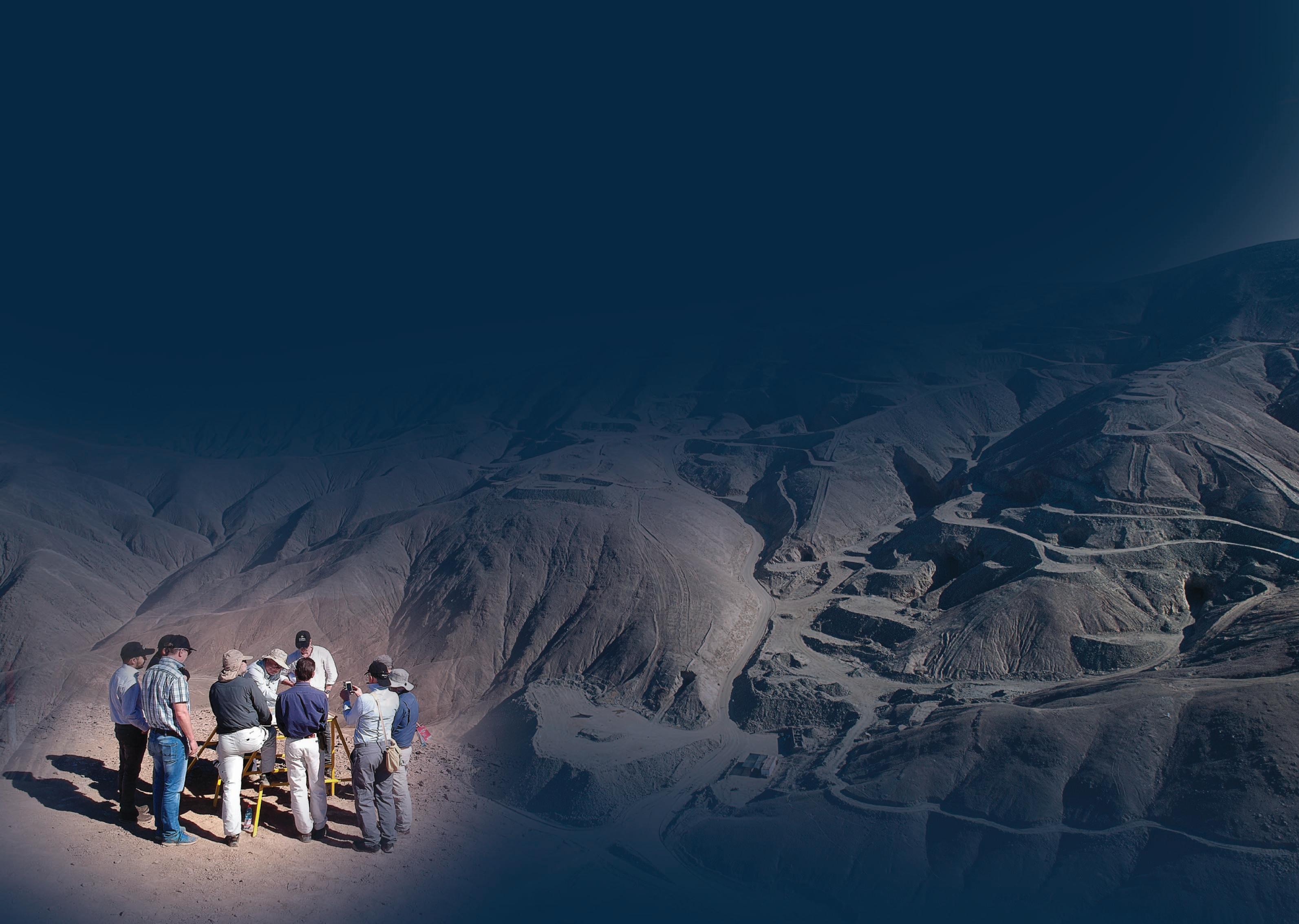

mining operations, specifically in Africa, due to our location, we have no immediate local populations that would require resettlement for development. The nearest town is 25km away and is already an established logistics hub. This means that we have a great pool of local contractors available for a variety of services, with whom we can partner for future needs. Antofagasta is slightly further away and is a world-renowned location for mining-skills for purposes of recruiting our future operational workforce.
“Suppliers are very important to building our long-term success, and we appreciate their invaluable experience in the region. Our core suppliers are currently related to
our exploration drilling campaigns, project engineering, mine planning and processing reviews. Many of our suppliers have worked on the development needs of Marimaca for some years now. They form part of our project review and development teams and play a critical role in our development planning.”
So far, the Marimaca project has exceeded all expectations. In 2022, the company published a significant upgrade in the scale of the resource, doubling the former resource estimate. This marked an important step-change in the scale of the project,


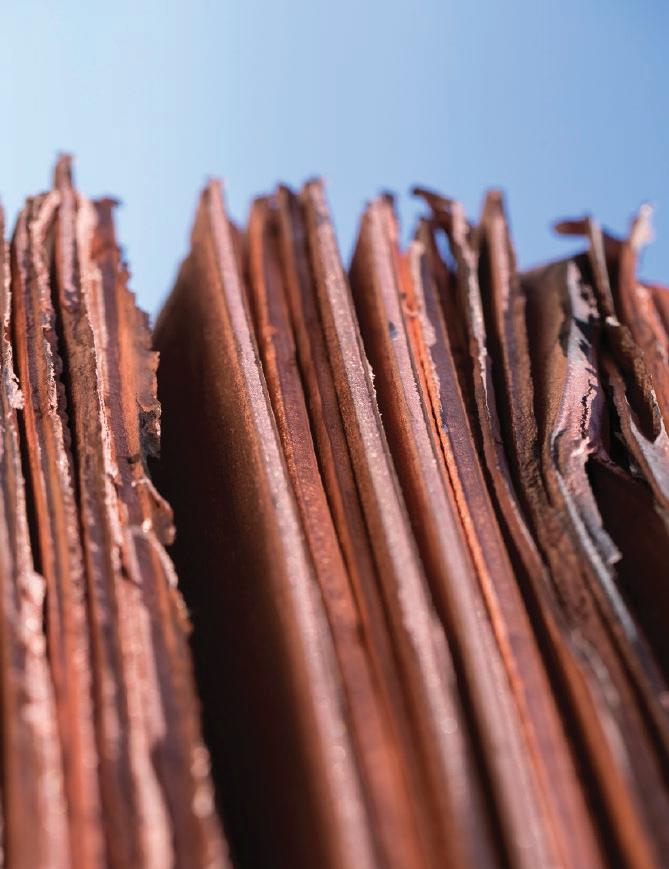
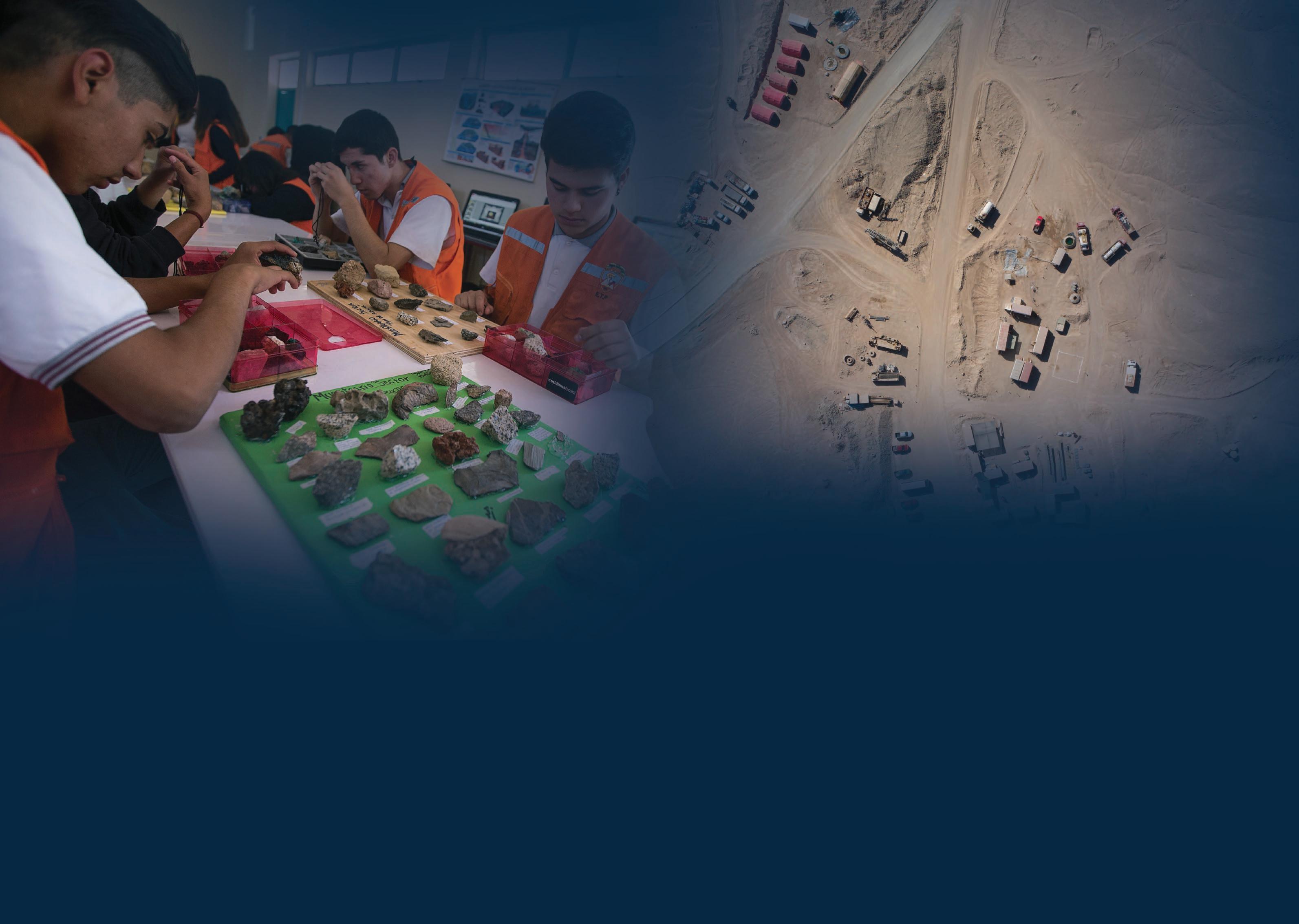
supporting a potential production rate higher than that proposed in the 2020 Preliminary Economic Assessment (PEA).
Commenting on the new discovery, the company’s management reflected that it establishes the Marimaca project as one of the most significant greenfield copper oxide discoveries of the last 20 years, and confirms its potential to host over one million tonnes of contained copper in a single pit.
“Conducting additional exploration programmes has established that the prospective project is far larger than anticipated,” explained Ms Rich. “However, although larger, the actual complexity hasn’t changed. It doesn’t require additional means of processing. It simply means extending the mine life, as opposed to changing the structure that we envisaged.”
Speaking about the next steps, Ms Rich highlighted that the company is working on a dual-track strategy: regional and near mine exploration that could further expand the resource or lead to a discovery of a new Marimaca and, progress permitting, a definitive feasibility study for the Marimaca project itself.
“We are undertaking the relevant environmental and technical studies,” she continued. “We are also conducting a definitive feasibility study, that should allow us to assess options for construction in 2025.”

From an industry perspective, the continuing development of green or sustainable mining is a core focus for all operators and for the industry’s wider stakeholders, be they investors or governments.
“The need for critical raw materials will only increase,” concluded Ms Rich, “and there now appears to be an increasing realisation that mining is indispensable, given its importance for the transition to a net-zero economy. So, it is imperative to discover new mines and to develop them in a sustainable manner.” n


BHP Group Limited is one of the world’s leading mining and resource companies. The Australian company was founded in 1885 as the Broken Hill Proprietary Company Limited. The business has since evolved into a global powerhouse in the extraction and processing of natural resources. Hannah Barnett found out more.
Having made a mark in mining for the last 140 years, BHP is now committed to playing a considered role in building a better world. The business seeks to do so responsibly and sustainably while continuing to create value, both for shareholders and the broader community.
“Mining is an industry for today and tomorrow,” said Mike Henry, CEO, on the first page of the company’s website. “At BHP, we are already providing materials and jobs critical to the future, and we see clear opportunities to use our strengths to continue to grow value for shareholders. I am incredibly optimistic about the future of our company.”
BHP’s origins trace back to the mining of silver, lead and zinc in Broken Hill, New South Wales in the 1880s. Over the decades, the company expanded operations, venturing into steel production and diversifying its mineral portfolio. BHP marked entry into the new millennium with a particularly significant


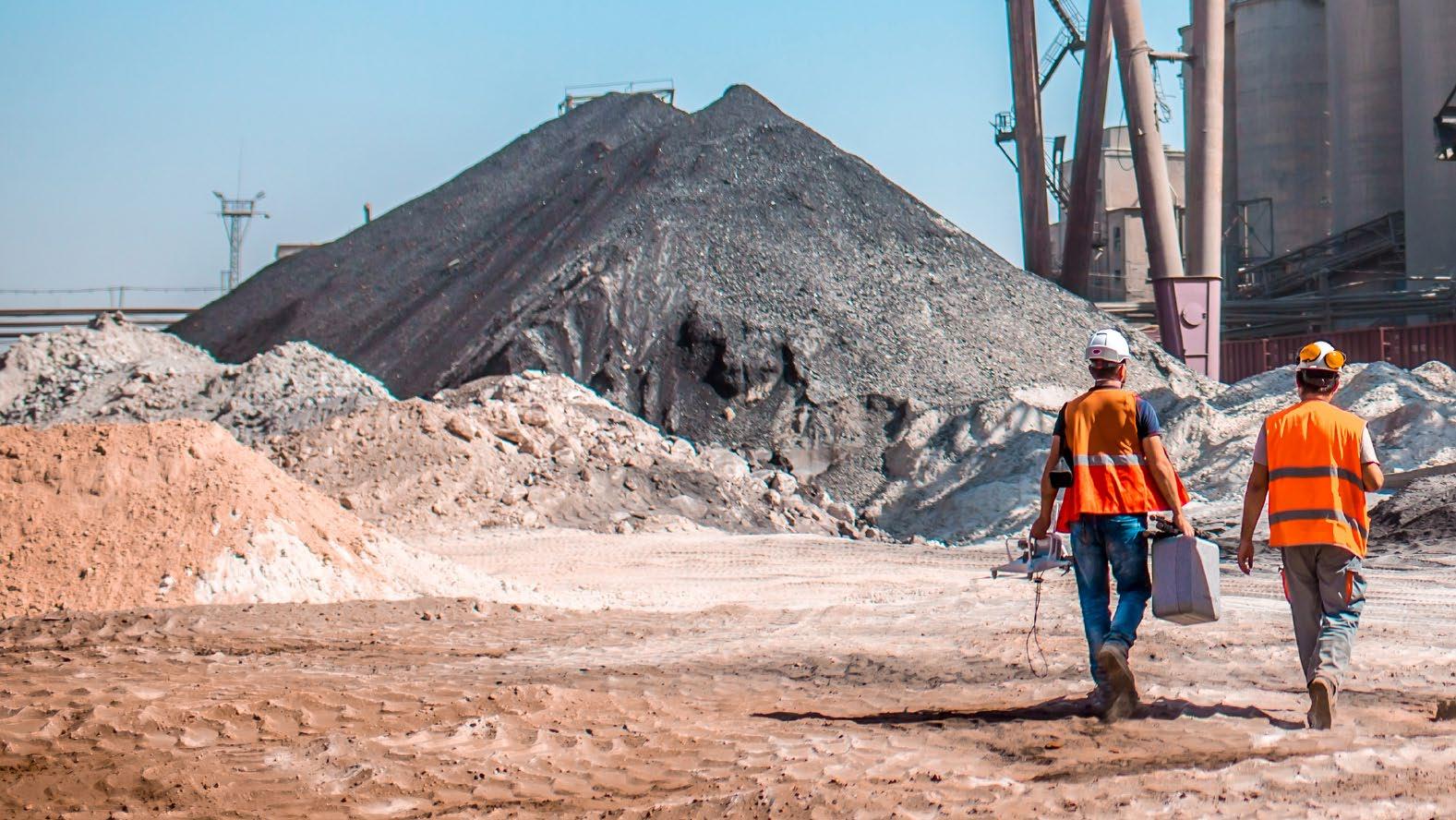
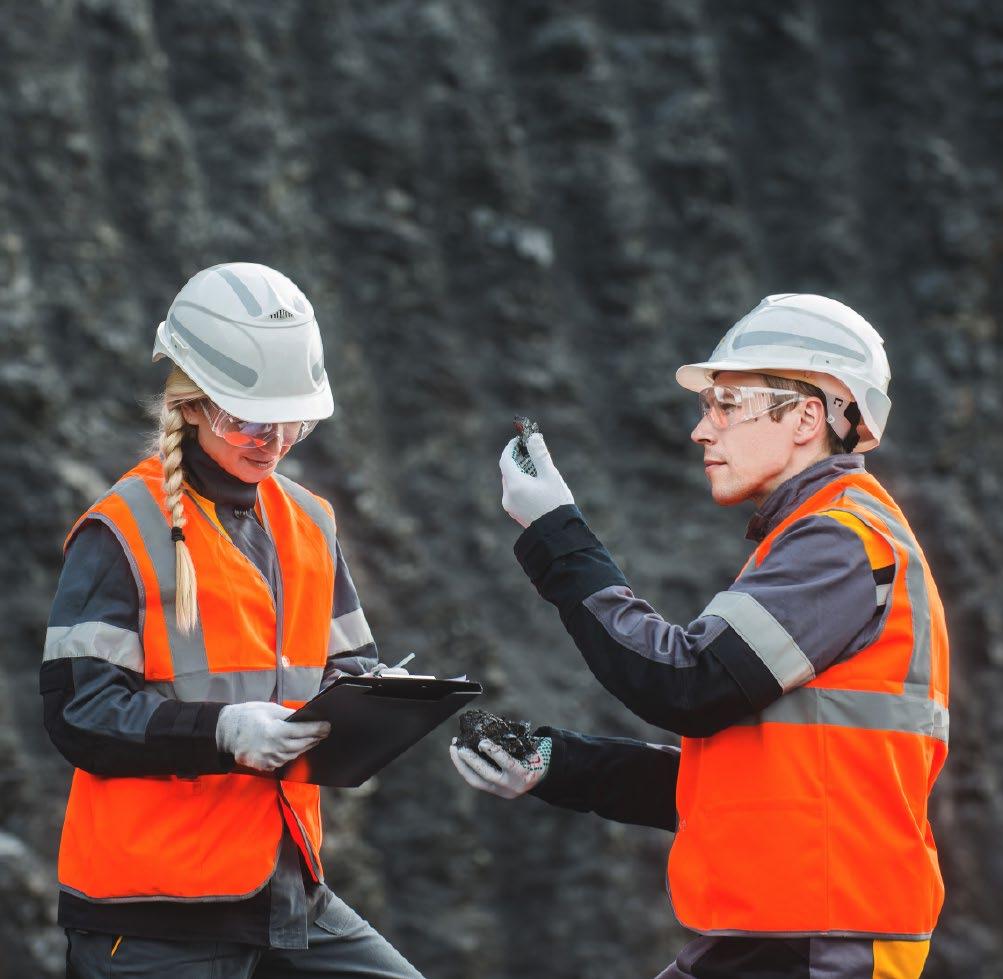
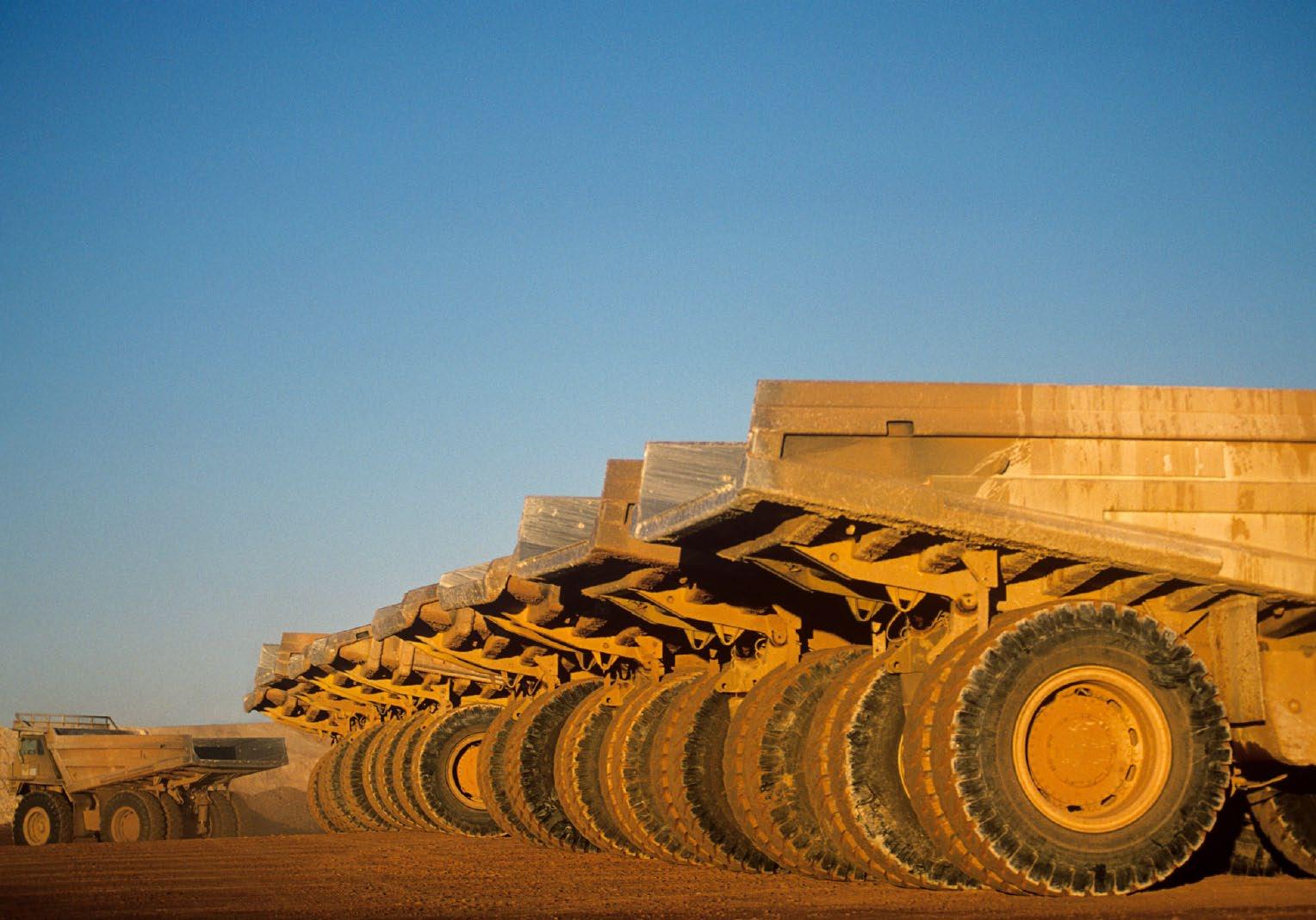
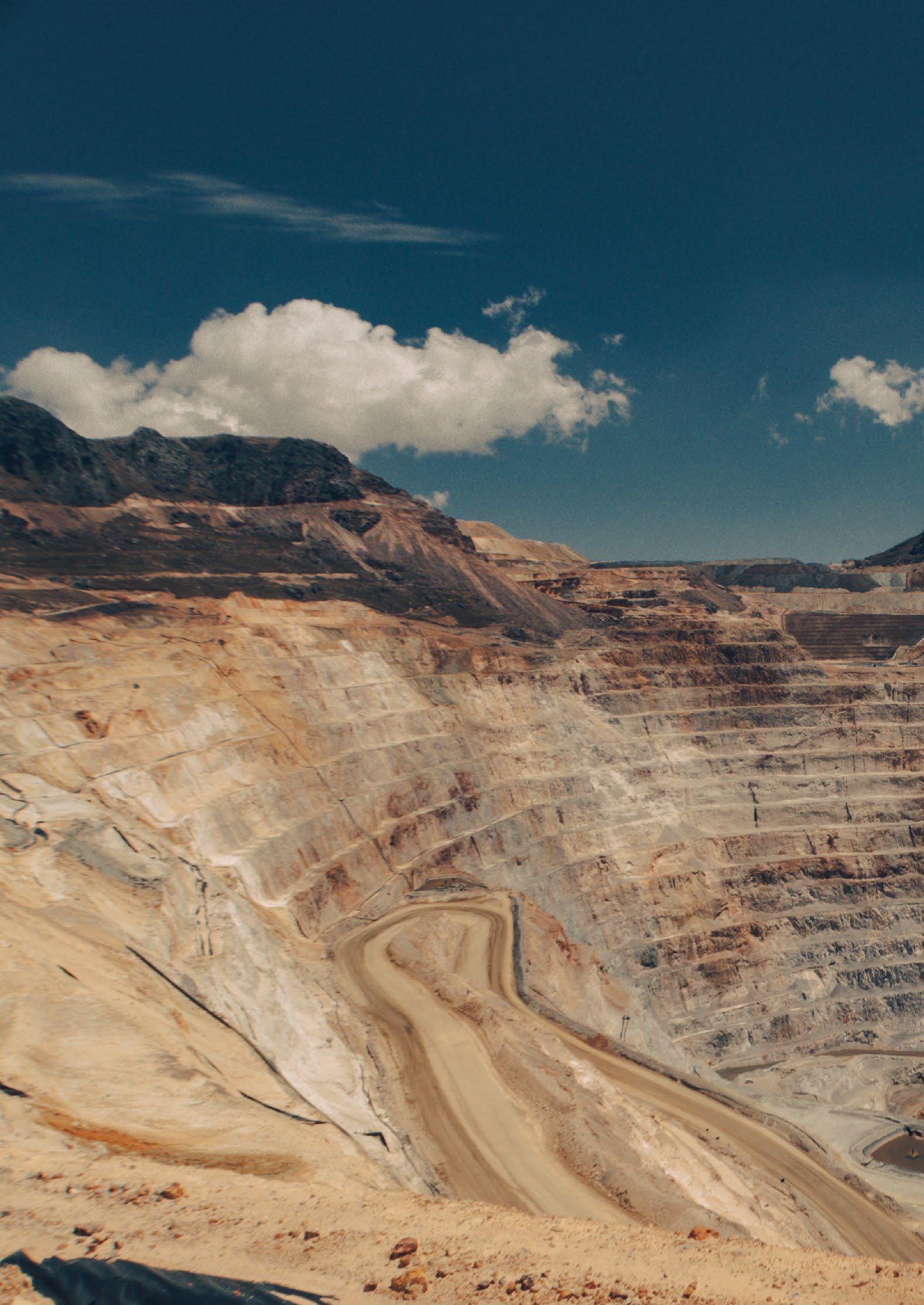
milestone – a 2001 merger with Billiton plc, a company with roots dating back even further than BHP (it was founded in 1851 as a tin mining enterprise on Indonesia’s Belitung Island). This merger formed BHP Billiton, which later rebranded to BHP in 2017.
Today, BHP operates in over 90 locations worldwide, producing a diverse range of commodities essential to global infrastructure and development. The company’s primary products include iron ore, copper and metallurgical coal.
For the fiscal year 2024, BHP reported a total economic contribution of US$49.2 billion. The company maintains a strong commitment to sustainability, achieving a 32% reduction in operational greenhouse gas emissions since 2020. Additionally, BHP has made significant strides in diversity, with female workforce representation reaching 37.1% as of June 2024.
BHP’s enduring commitment to responsible resource development, strategic investments in future-facing commodities and robust leadership underscore its pivotal role in meeting the world’s evolving resource needs. As it states online, the company has sought to be: ‘a simpler, more efficient BHP, one that is better able to capitalise on the megatrends shaping our world.’
On the subject of global megatrends, the company is carving out a clear, coherent and consistent role in the energy transition. This means strategically focusing on commodities like copper, essential for renewable energy technologies, and potash, vital
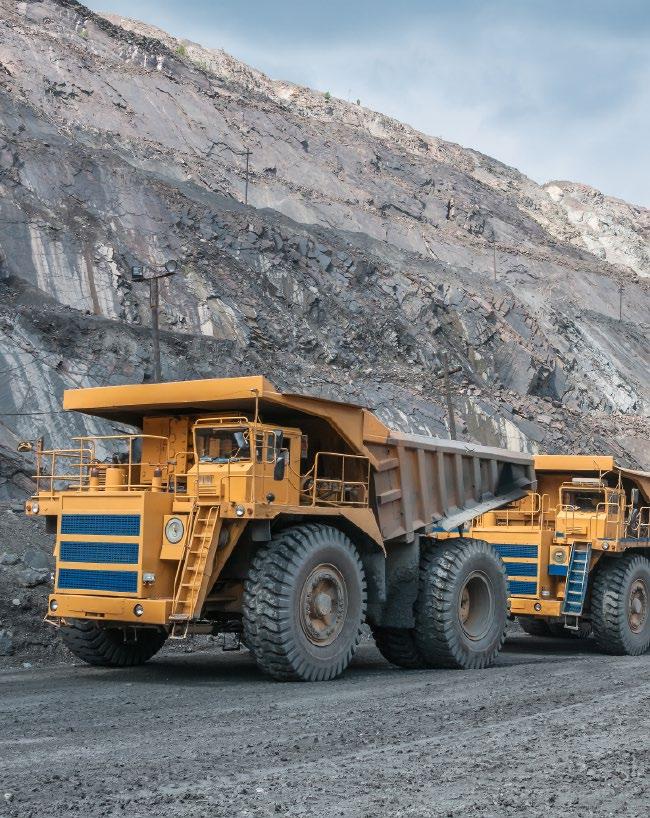
for agriculture. Copper is useful because it is one of the world’s most recyclable materials; almost all copper products can be recycled. Additionally, electric vehicles use four times as much copper as petrol-based cars.
Therefore, in the move towards a lower carbon future, copper is essential to create the infrastructure needed for renewable energy sources, such as wind and solar. BHP also recognises that the demand for copper will continue to grow due to grade declines at existing copper mines, the radical urbanisation of large populations in China and India, and the ongoing electrification of energy and transportation. BHP produced 1,716.5 kilo-tonnes of copper in the financial year of 2023.
Potash, specifically Muriate of Potash, is a potassium-rich salt used to improve agricultural production. Potassium is essential for plant health as it increases yields, improves water efficiency, and increases pest and disease resistance. Potassium
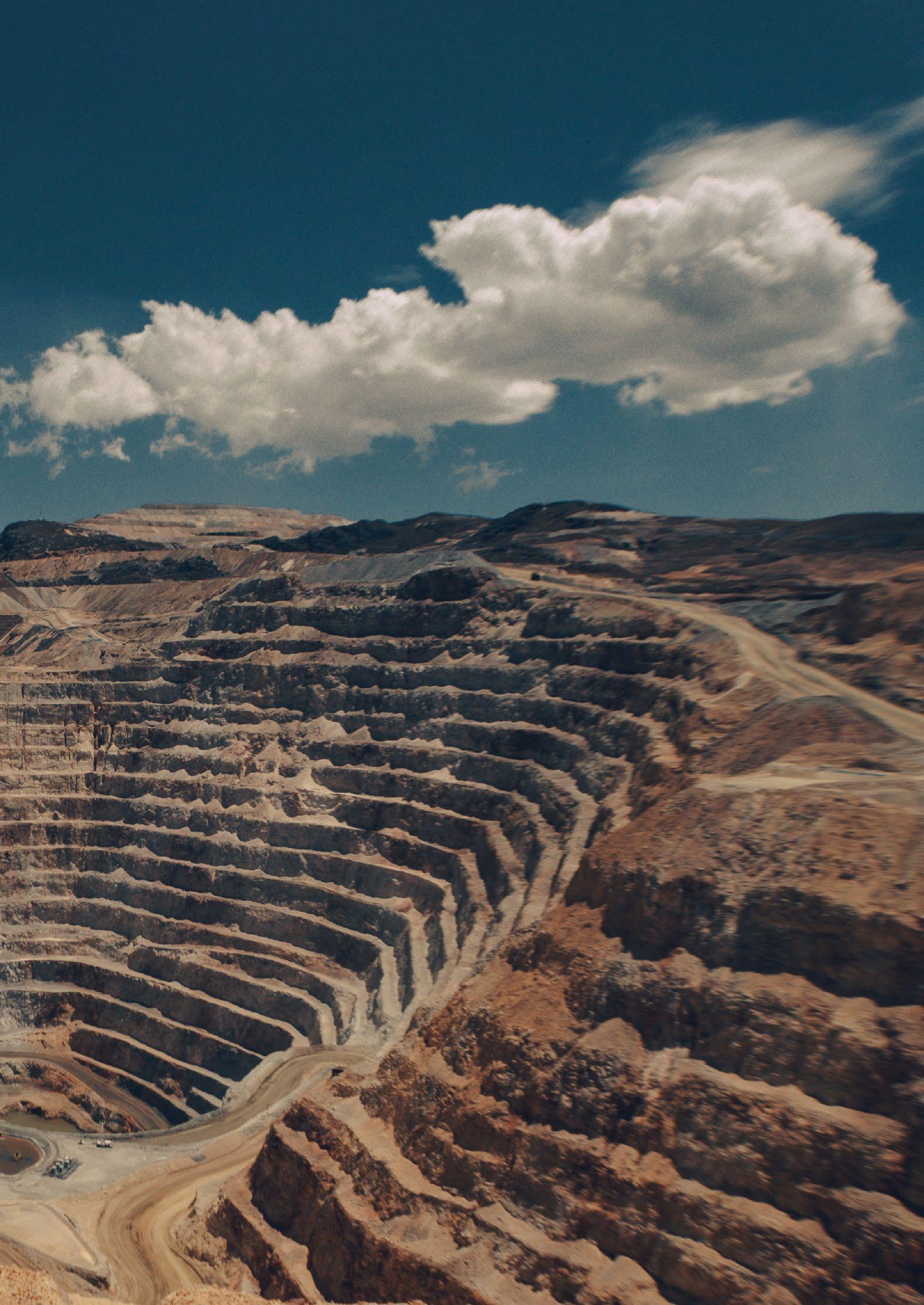
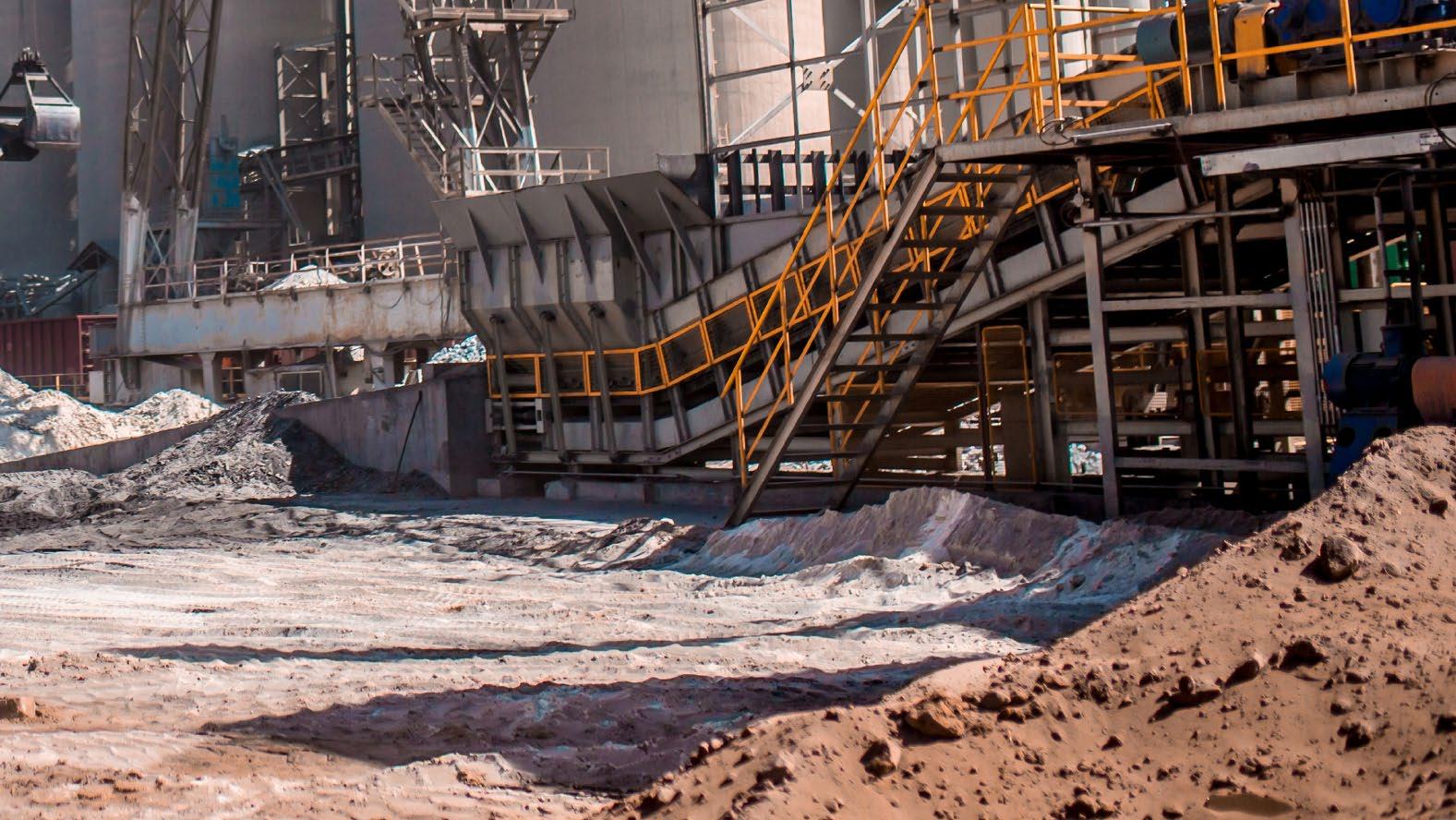
naturally occurs in soil, but farming depletes the mineral faster than naturally occurring sources can replenish it. Regular use of potash helps maintain the productivity of fields that have lost nutrients from years of repeated nutrient removal through harvest.
Around 70 million tonnes of potash is produced globally each year, predominantly in Canada and across the Former Soviet Union. As a result, BHP is investing heavily in the Jansen potash project in Canada.
As part of its commitment to mining potash at Jansen, in January 2025 BHP and Carlton Trail College announced the launch of the BHP Potash Academy. This eight-month paid traineeship is designed to equip those new to the mining industry with essential skills required for production or maintenance technician roles at the Jansen mine site in Saskatchewan, Canada.
The programme includes a mixture of classroom and theory learning, as well as practical workshop training for hands-on experience. At the end, trainees will earn a Certificate in Mining Essentials, an Applied Certificate in Industrial Mechanics and permanent, full-time employment at the Jansen mine site to contribute to the operation’s long-term success.
“The launch of Potash Academy is an important milestone that will support the long-term success of Jansen and economic growth and participation in the region,” said Graham Reynolds, General Manager of Operations at BHP in an online press release. “We
look forward to working with this great group of trainees who bring diverse experience that they can apply to BHP and the mining industry.”
“With the launch of this new partnership between our College and BHP, we are bridging the gap between workforce need, classroom learning and the real-world application of skills,” agreed Amy Yeager, Carlton Trail College President and CEO, on the same press release. “We look forward to delivering this unique initiative that will shape the future of both training and industry.”
Recognising the importance of industry collaboration, at the end of 2024 BHP announced that it has partnered with Rio Tinto and BlueScope Steel to construct a pilot plant in Western Australia’s Kwinana industrial hub.
The facility will use renewable power and direct reduced iron technology in an electric smelting furnace to produce molten iron, with a potential annual output of 30,000 to 40,000 tonnes. Overall, the facility aims to produce low-carbon iron, potentially achieving near-zero greenhouse gas emissions in steel production.
As the world transitions to cleaner energy and more sustainable industrial practices, BHP’s ongoing efforts will be crucial in meeting global demand for essential materials while minimising environmental impact. The company’s progress in making the mining sector greener not only strengthens its business model, but also contributes to a more sustainable future for the planet. n
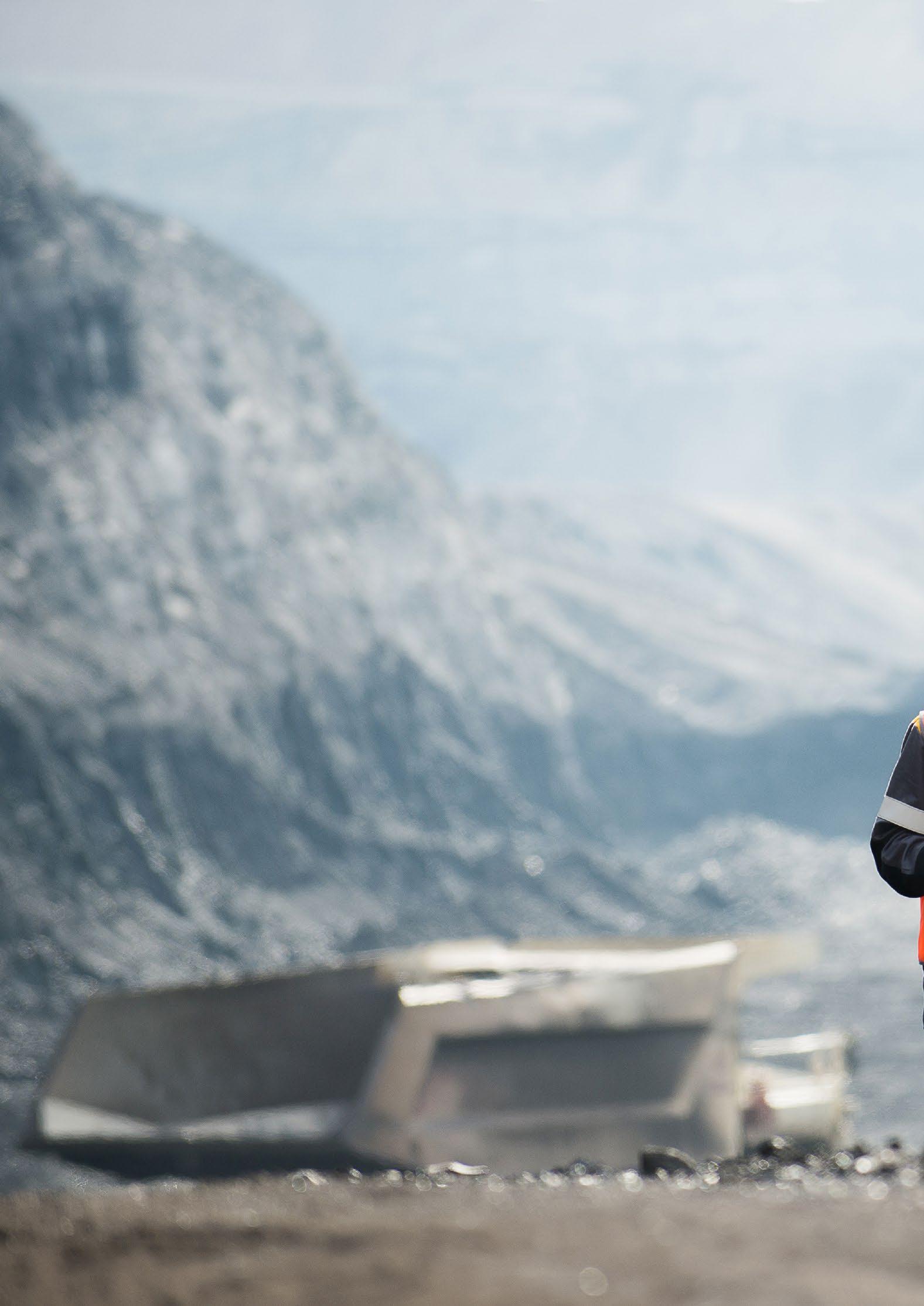

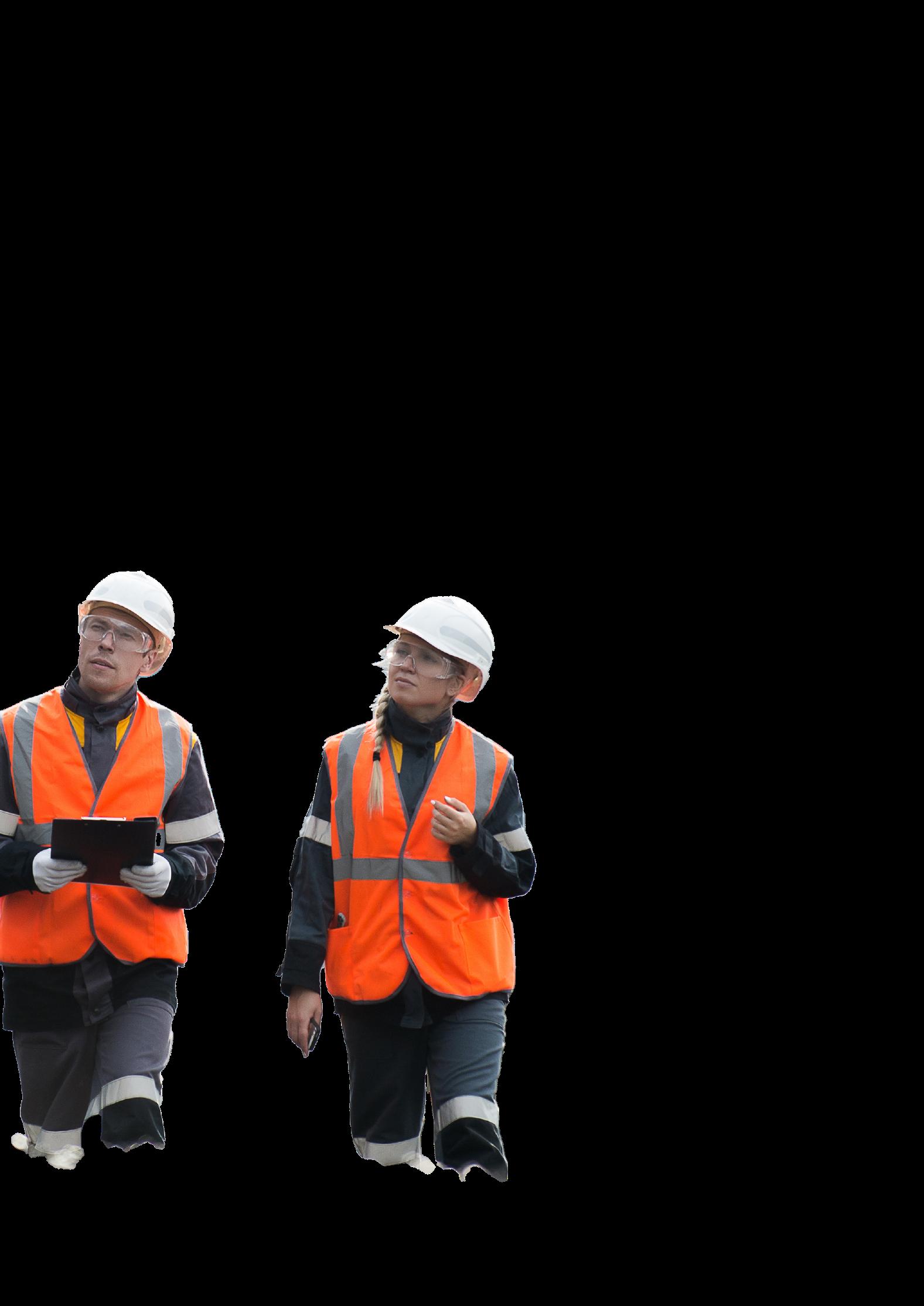

As one of the world’s largest iron ore producers, Rio Tinto is a name renowned within the mining industry. With more than 150 years of experience backing it, the company has been hard at work implementing expansion plans and enacting its sustainability strategy.
For Rio Tinto, the world’s second largest metals and mining corporation, 2025 is already shaping up to be an actionpacked year. From green investments to asset expansion, Rio Tinto is covering all its bases as it navigates a rapidly evolving landscape.
Sustainability remains a top priority for Rio Tinto in 2025, building on its ambitious multi-billion-dollar commitment, announced five years ago, to cut carbon emissions in half by 2030. With growing emphasis on decarbonisation, the mining giant


has ramped up its investments in renewable energy, carbon storage and technological advancement, implementing key new projects across the globe.
In February, Rio Tinto signed a new power purchase agreement with Red Rocket South Africa that would greatly benefit its Richards Bay Minerals operation. First operating in 1976, Richards Bay Minerals is a world leader in heavy mineral sands extraction and refining, as well as South Africa’s biggest mineral sands producer. Currently owning a 74% share in the producer, Rio Tinto has a prominent interest in its success.
Under the new agreement, Red Rocket
electricity to its Richards Bay Minerals operation. This contract will be fulfilled using wind energy from the Overberg Wind Farm, which is expected to begin producing energy from December 2026.
This new agreement joins two other clean energy agreements previously assigned to Richards Bay Minerals. The Bolobedu solar agreement was implemented back in 2024 and is expected to generate up to 300GWh of clean energy to cover 17% of the minerals producer’s energy requirements. Khangela Emoyeni wind farm also joined the energy cluster in June of the same year, with plans to generate 140MW of wind energy for


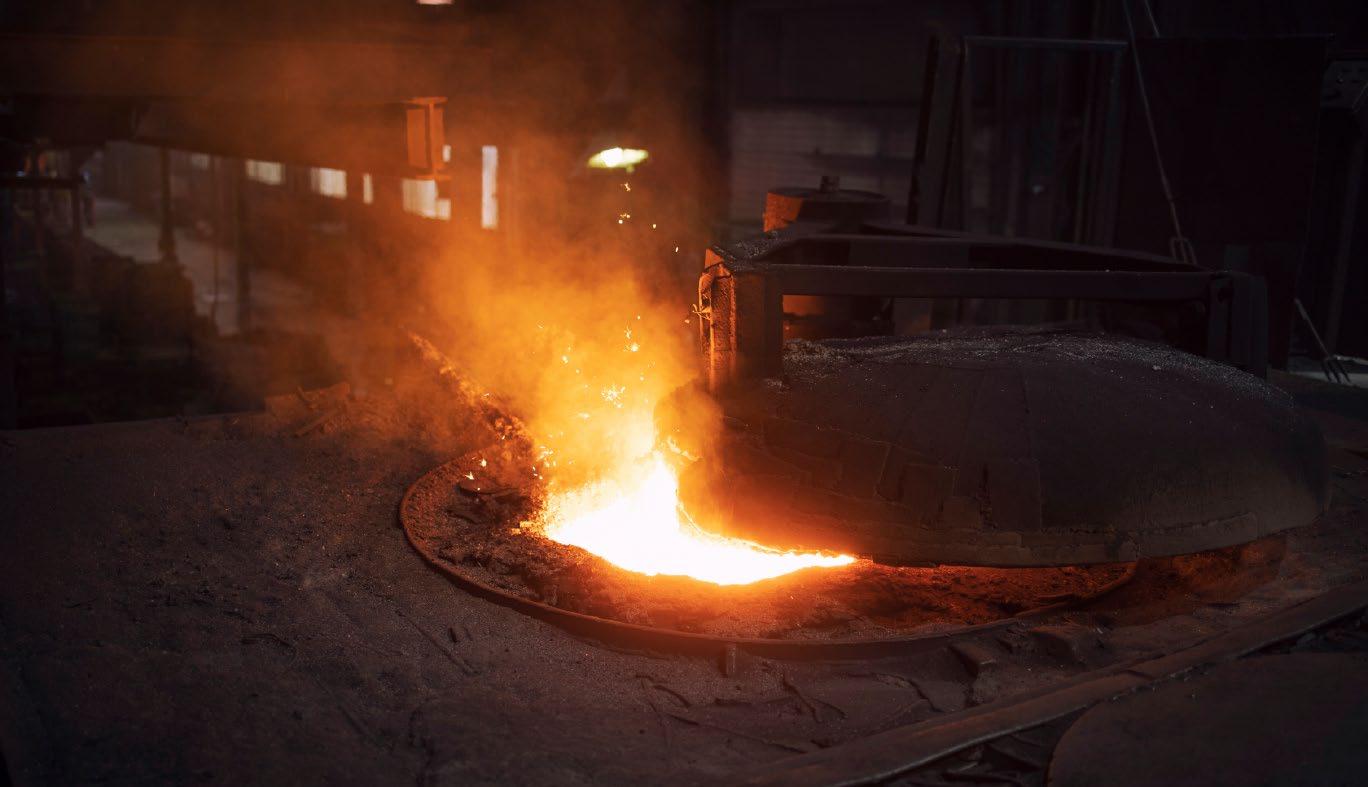
Once all three renewable energy sites are up and running, it is estimated that, collectively, they will help reduce the mineral producer’s carbon emissions by a whopping 60%.
On a similar vein, the company has also been busy unlocking new sustainable pathways for its iron ores.
In 2023, Rio Tinto’s scope 3 emissions were reportedly 18 times higher than its scope 1 and 2 emissions, prompting it to set out three separate pathways for progression (existing, emerging and future) that were designed to help reduce the carbon emissions of its consumers.
Under the first route, Rio Tinto is dedicated to working with customers to lower the carbon intensity of Blast Furnace steel production. Once complete, the company will seek to utilise its high-grade iron ores to encourage the excelled use of low-carbon
DRI-EAF technologies. From there, Rio Tinto hopes this accelerated growth will inspire the development of new technologies.
In an effort to bolster this strategy, Rio Tinto entered a new agreement with GravitHy, a sustainable iron and steel company decarbonising steel production with low CO2 DRI. The agreement will see Rio Tinto become a prominent sales agent for the steel producer, in an effort to highlight the need for its green HBI. In return, GravitHy will work to process Rio Tinto’s iron ore at the steel producer’s upcoming hydrogen-powered plant. By utilising this sustainable pathway, Rio Tinto expects to save almost 90% of emissions produced via standard processing.
Although partnerships are a prominent feature of Rio Tinto’s growth strategy, the company has also been implementing


ONCE ALL THREE RENEWABLE ENERGY SITES ARE UP AND RUNNING, IT IS ESTIMATED THAT, COLLECTIVELY, THEY WILL HELP REDUCE THE MINERAL PRODUCER’S CARBON EMISSIONS BY A WHOPPING 60%.
several key investments to further enhance capabilities. One particular example which is beginning this year, involves Rincon, its first commercial-scale lithium operation.
Based in Argentina, Rincon, which had previously been operating at a humble 3,000-tonnes per year of battery-grade lithium carbonate, will undergo a major $2.5 billion expansion. With work expected to begin shortly, the multi-billion-dollar plans
will see the plant’s capacity increase by a further 57,000 tonnes.
Speaking on the topic, Rio Tinto’s Chief Executive Jakob Stausholm, explained why this investment is so important: “The attractive long-term outlook for lithium driven by the energy transition, underpins our investment in Rincon. Rincon is a large, long-life asset with ore reserves 60 per cent higher than we assumed at the time of acquisition,
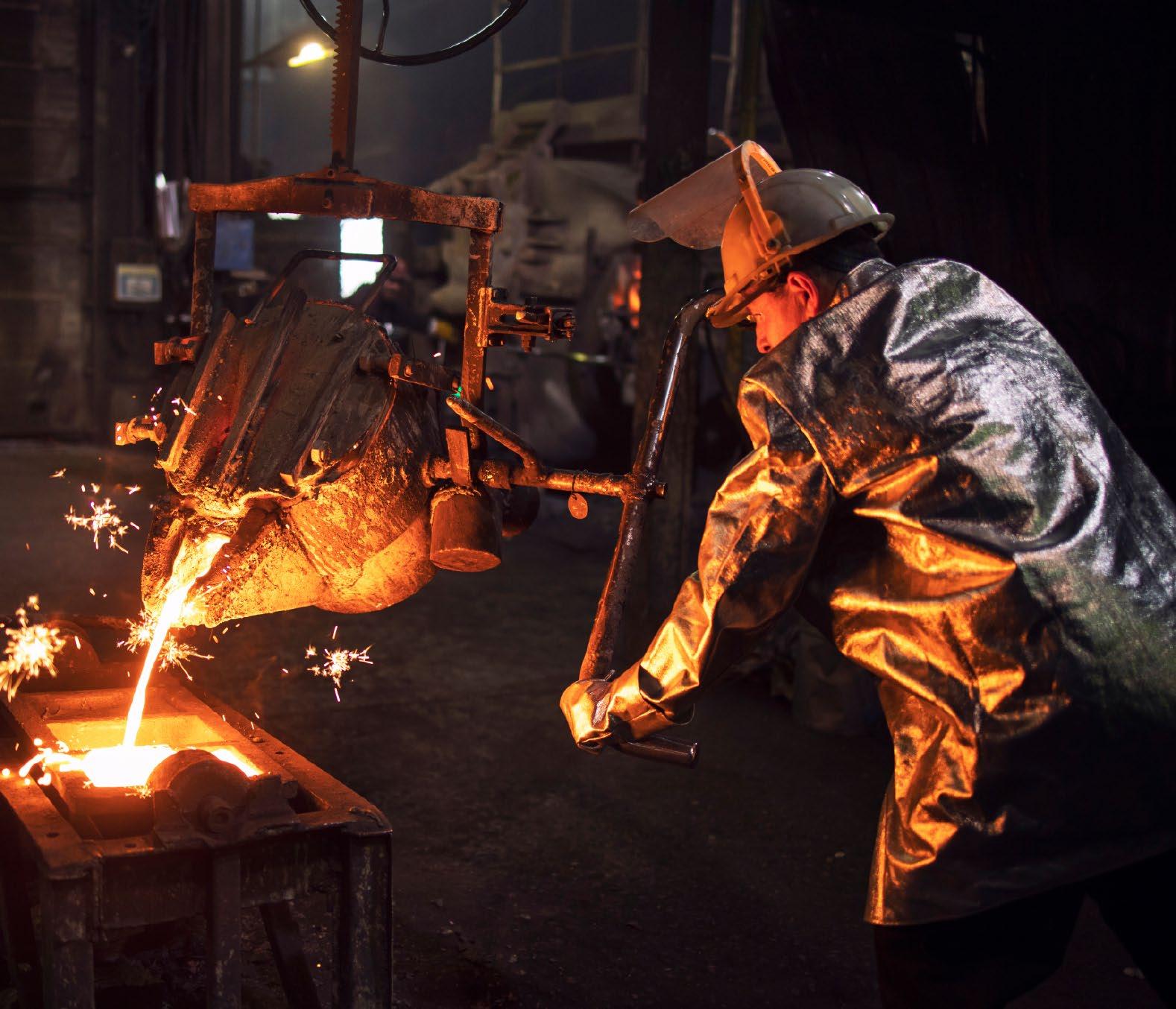

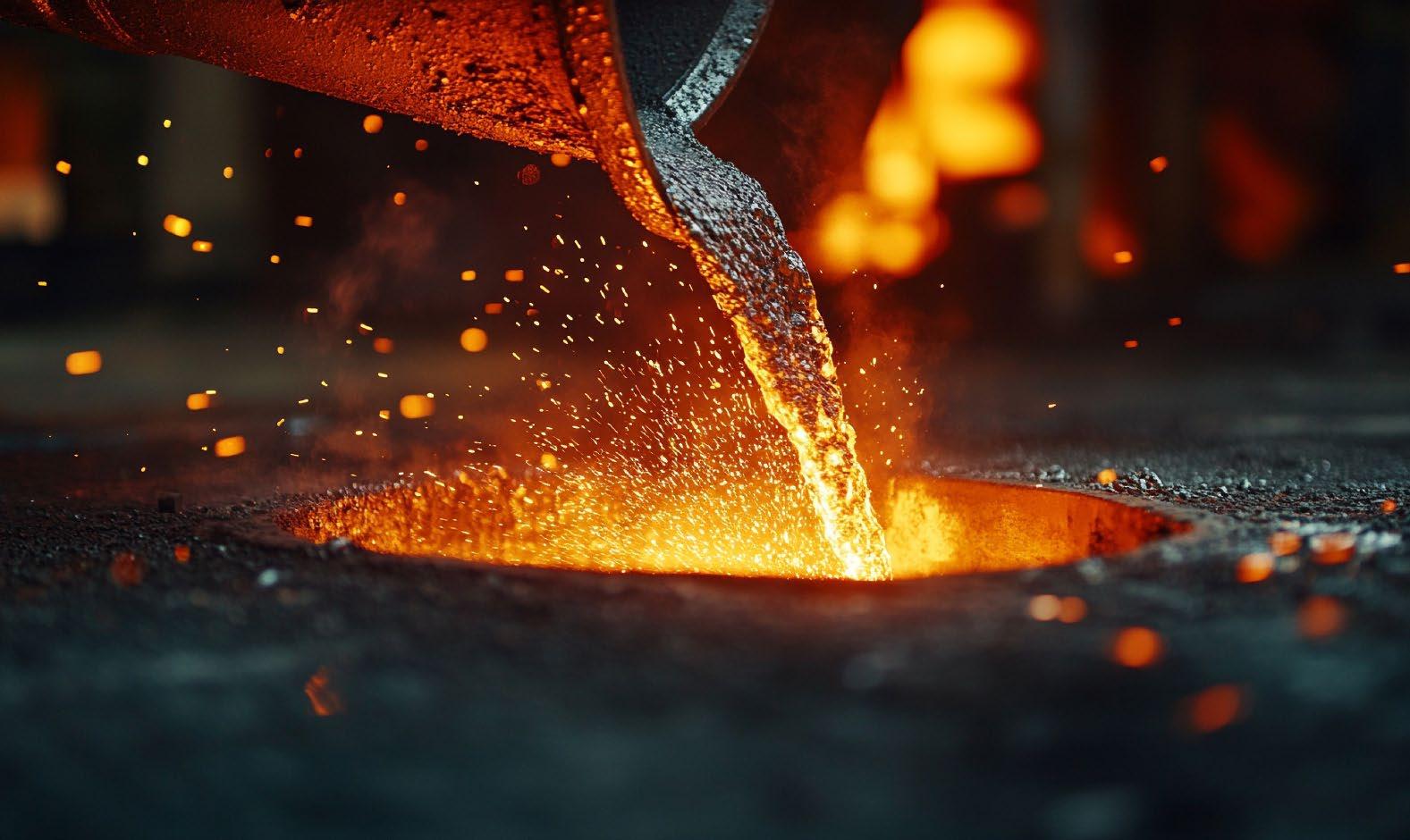
and this investment ensures that lithium will become one of the key pillars of our commodity portfolio for decades to come.”
Construction is expected to continue through to 2028, when first production is estimated to take place. From there, the plant will undergo a three-year ramp up to full capacity.
With so much advancement underway, Rio Tinto is determined to be around for the long haul and has implemented several key programmes to encourage the development of skills in young people. From leadership development programmes to formal and informal mentorships, the company is committed to nurturing a positive environment for the next generation of leaders – successfully signing up more than 250 people to its graduate prog-rammes each year. This dedication has landed the multinational company within Canada’s Top

100 Employers for Young People in 2025 – a big deal for Rio Tinto which currently holds the lead position as the largest mining and metals company operating in Canada.
In line with this news, the company recently appointed Georgie Bezette as its new Chief People Officer, who is dedicated to further talent development, nurturing of positive workplace cultures and creating more inclusive environments for all. Ms Bezette joins the role from her previous position as the company’s Chief Operating Officer and holds almost 20 years of experience working at the company.
The development of its people will continue to play a prominent role in Rio Tinto’s strategies going forward. As the company looks to enhance its offering and expand its presence, providing a high-quality, experienced service is key to ensuring long-term success, fostering strong client relationships and maintaining a competitive edge in the industry. n
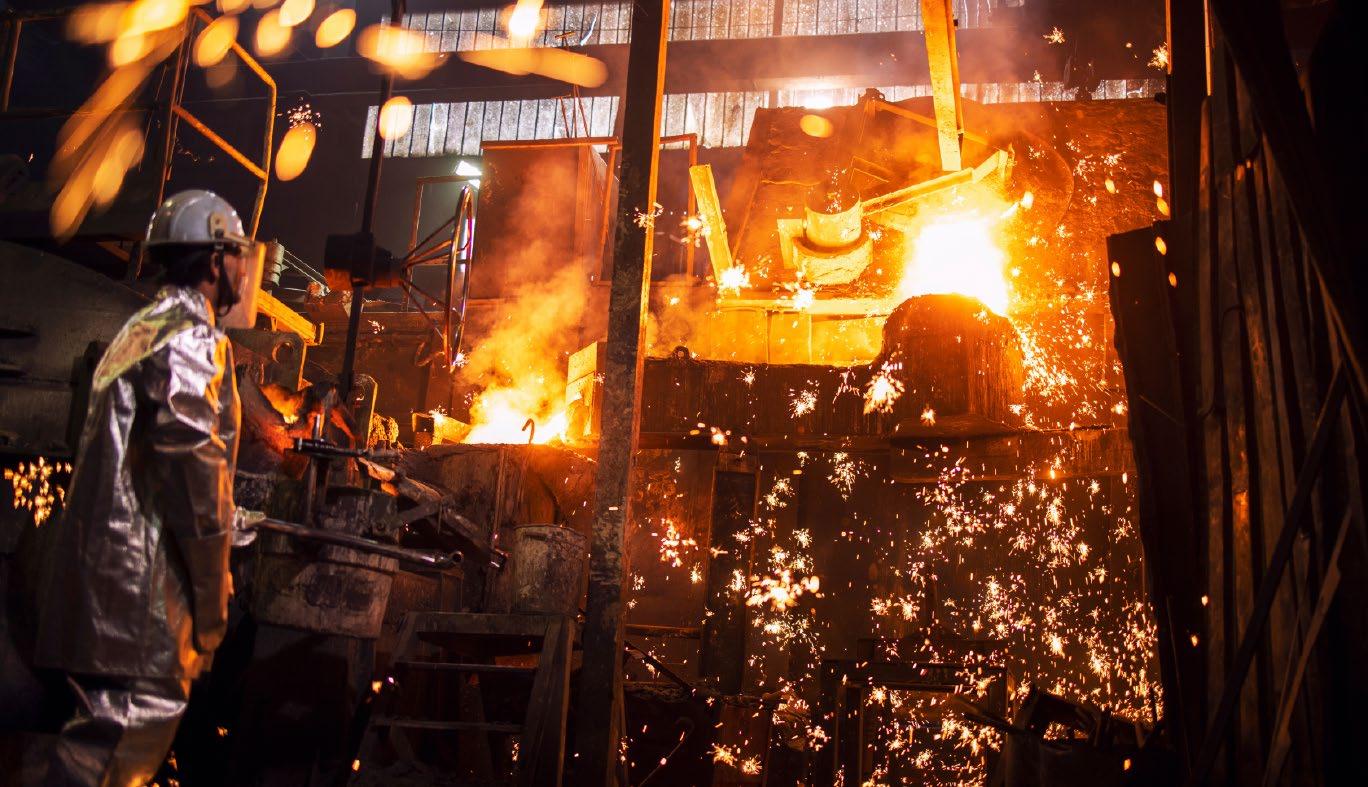
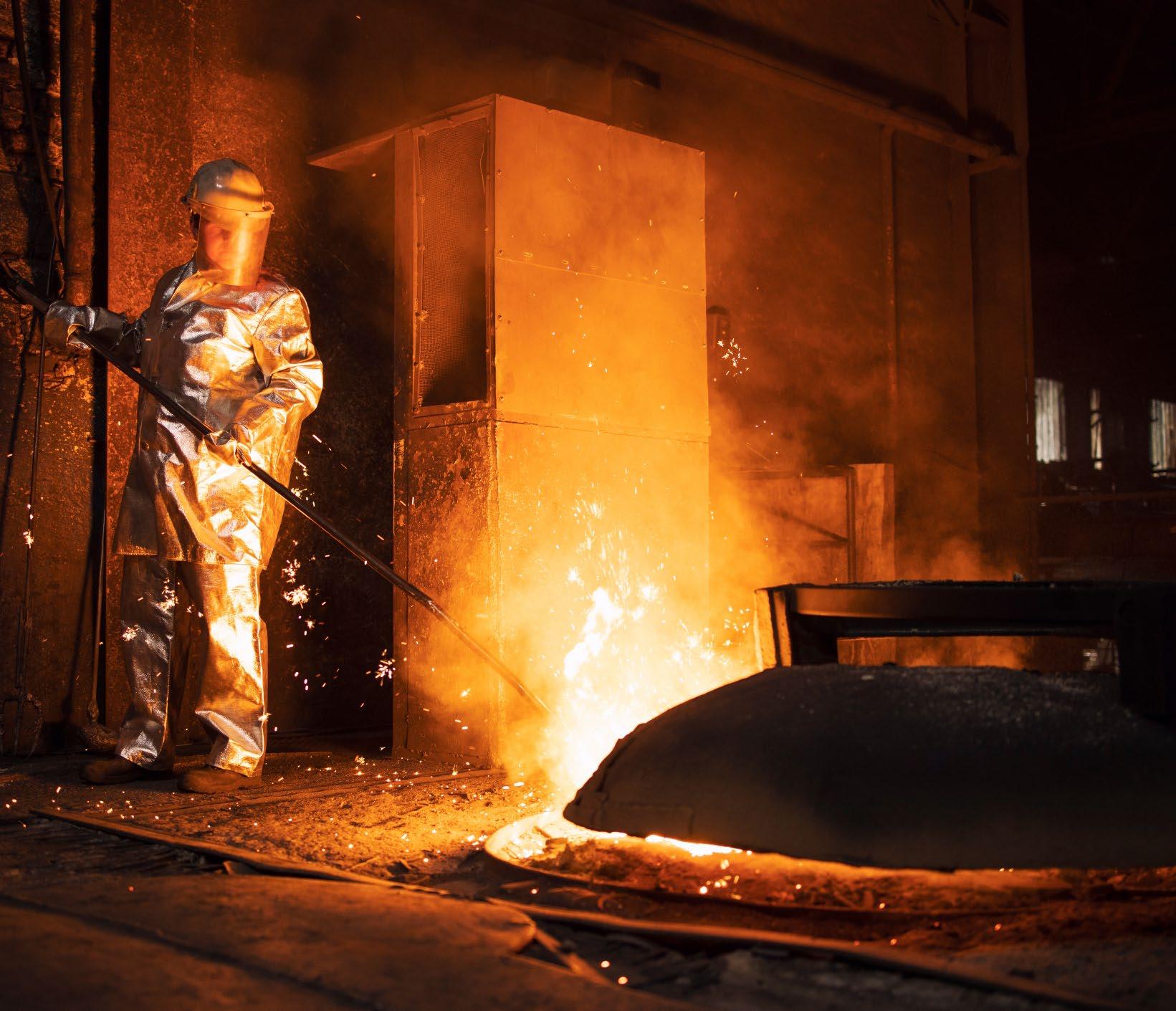

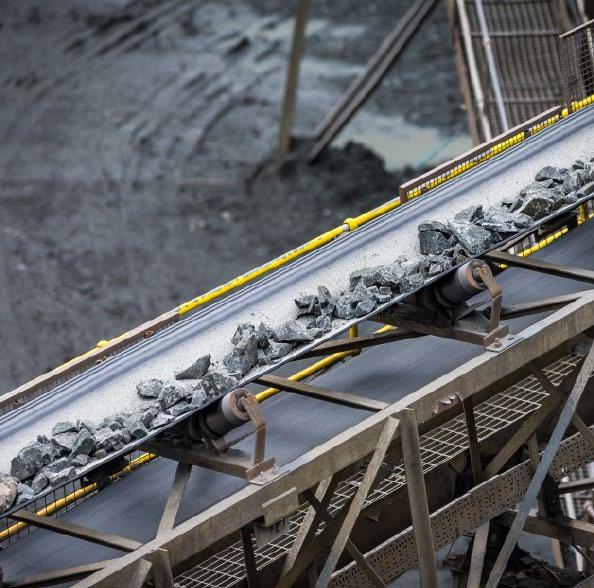
Zijin Mining is a mining group operating on a global scale. Specialising in the extraction of metals including copper, gold, zinc, lithium, silver and molybdenum, the company is a key player in the industry. Inside Mining explored Zijin Mining’s contribution to global economic growth and sustainable development.
ASone of the world’s leading mining companies, Zijin Mining aims to set the standard for the industry. The company is evolving in terms of sustainability and technology, creating and adapting processes to optimise results. With research and engineering experts developing solutions in-house, Zijin Mining is at the forefront of mining innovation.
Ranked number one among global gold companies on the 2024 Forbes Global 2000 list, the company has established itself as a driving force in the industry. Zijin Mining is also ranked number five among metal miners and 267 overall on the list. On the Fortune Global 500 list, Zijin Mining is ranked 364 and on the Fortune China 500 list, the company is ranked 91. Zijin Mining has had a significant impact on a global scale, becoming one of the largest mining companies and a key driver of economic growth.
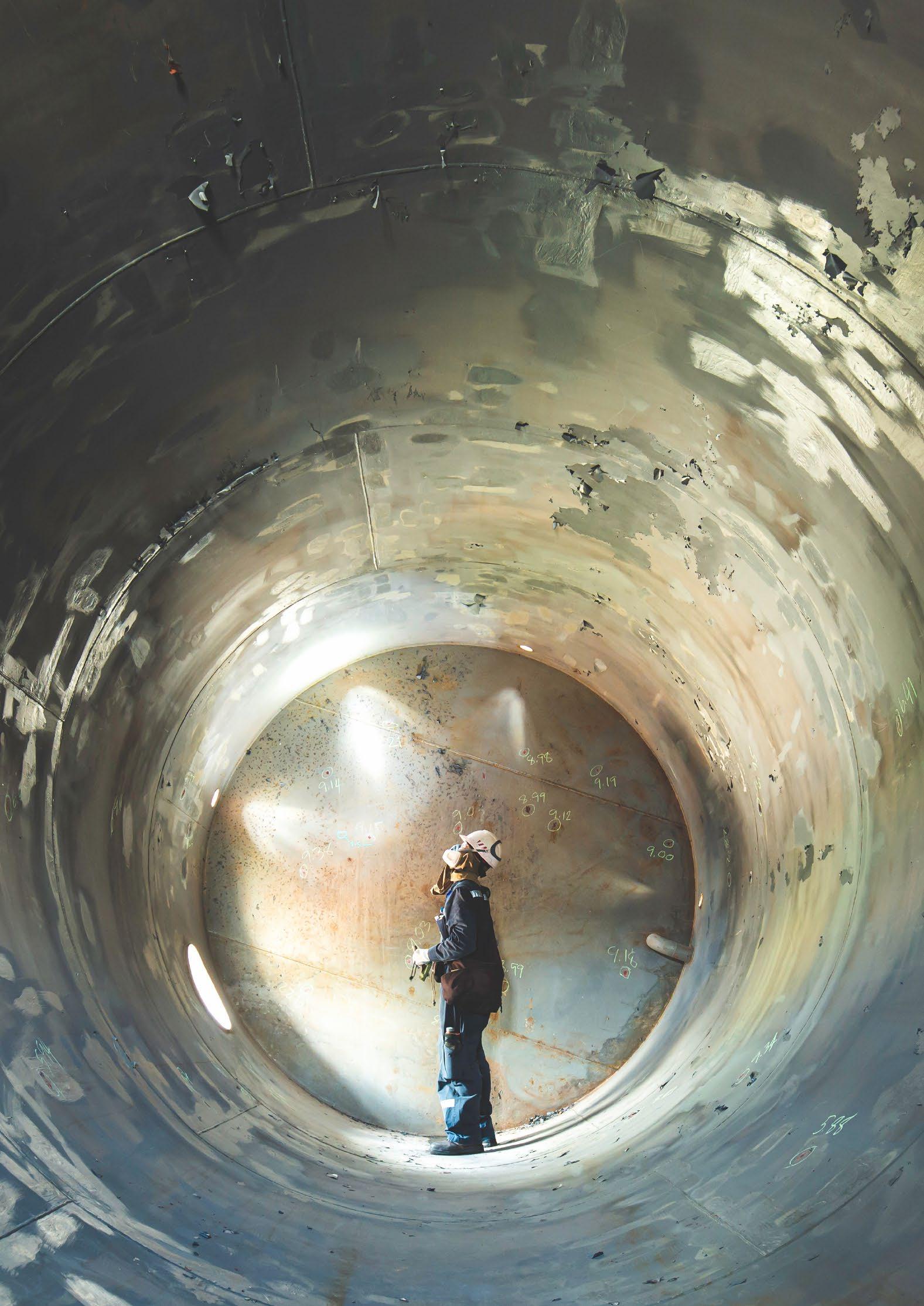
In 2024, the company generated a net profit attributable to shareholders of the parent company of RMB 32 billion, which is an increase of 51.5% from the previous year. The market capitalisation rose by 25% to RMB 401.9 billion, ranking Zijin Mining as number 26 on the A-share market.
In terms of production, the company’s operation grew significantly in 2024. Zijin Mining grew copper production by 5.94% to 1.07 million tonnes and gold production by 5.04% to 73 tonnes. Expansion projects across multiple sites, including Buriticá Gold Mine in Colombia, Rosebel Gold Mine in Suriname and Longnan Zijin in China, drove growth in gold production. Additionally, the Sawaya’erdun Gold Mine coming into operation grew gold production even further.
Zijin Mining’s origins date back to 1986, with the founding of its predecessor Shanghang Minerals Company. The company became Zijin Mining in the 1990s and achieved significant growth in China in the early 2000s with the acquisition of Guizhou Zijin and the Ashele Copper Mine in Xinjiang. Zijin Mining became a leading company in China and began to expand overseas and now has operations all over the world. From Asia, Europe and Africa to Oceania and South America, the company is active on almost every continent.
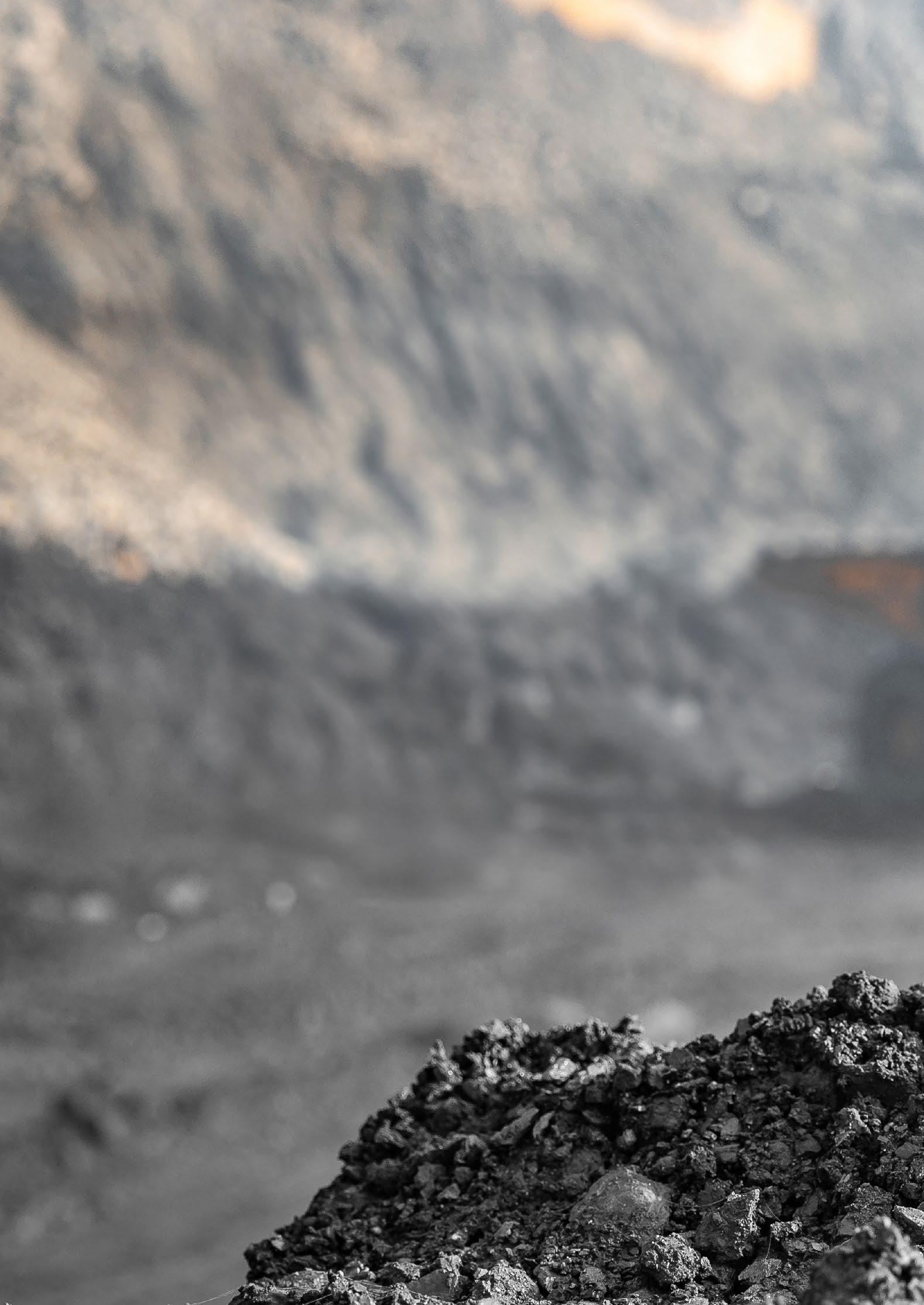
In recent years, Zijin Mining has invested in technological innovations, research and development and managerial expertise. The aim of this has been to improve cost management, creating efficient and effective processes. Last year, the company enhanced its global operations and management system. This involved strengthening strategic planning and coordination at its headquarters in Shanghang, China, whilst also moving its overseas operations department and the overseas operations centre to Belgrade, Serbia. This has increased the company’s capability to manage overseas assets.
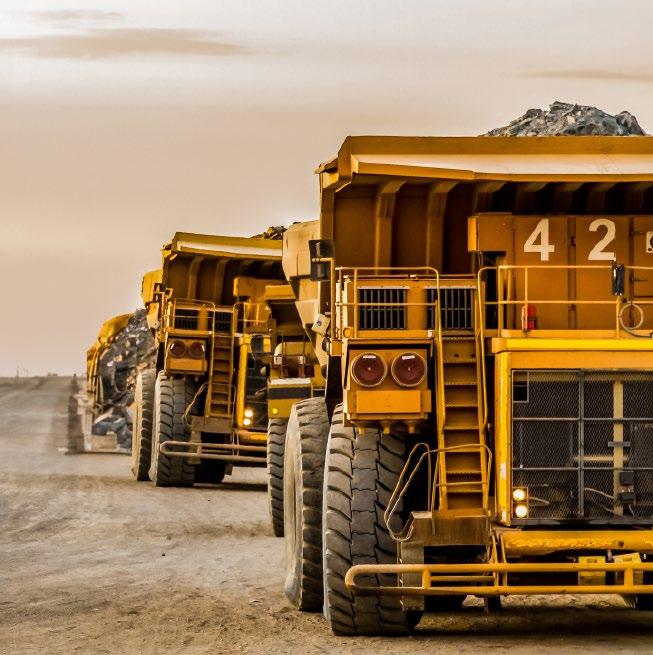
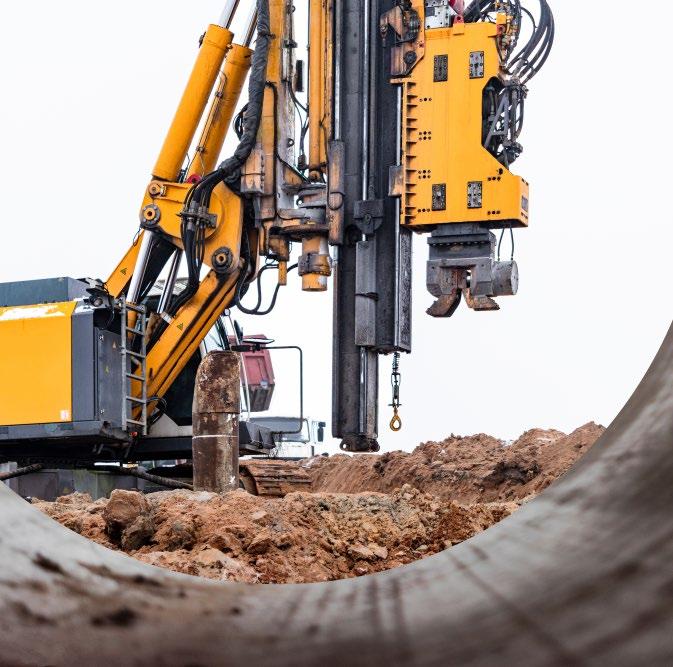

The company has also discovered significant resources through exploration efforts and acquisitions. At the Julong Copper Mine, Zijin Mining found an additional 14.726 million tonnes of copper, making it the largest copper mine in China with a total of 25.88 million tonnes of copper. Another 3.65 million tonnes of copper was identified at the Tongshan Mine of the Duobaoshan Copper Project. Other significant discoveries took place at both the Malka Golaja copper-gold deposit in Serbia and the Manono Lithium Mine in the Democratic Republic of Congo. The company also acquired the La Arena Copper-Gold Mine in Peru and is in the process of acquiring a project at the Akyem Gold Mine in Ghana.
The sustainability journey of Zijin Mining began in 2009, when it released its first social responsibility report. Since then, the company has evolved to become a leading mining company focused on a low-carbon future. In 2023, Zijin Mining defined its three-year plan and development goals, highlighting environmental management as a key factor.

After updating its ESG rating at the beginning of 2024, the company was recognised by Refinitiv, a subsidiary of the London Stock Exchange Group. Zijin Mining ranked as the number one company for ESG out of 671 global metal and mining companies. As a company, Zijin Mining has evolved its operations to enhance performance whilst protecting people and the environment.
The company strives to be a responsible miner and has implemented ESG best practices into its global strategy. Zijin Mining has set ambitious carbon footprint goals for 2029 and is hoping to achieve carbon neutrality by 2050. To achieve this, the company has integrated decarbonisation metrics into its performance assessments and has implemented environmental management guidelines into operations. Zijin Mining achieved a 1.46% year-on-year decrease in annual carbon intensity to 1.53 tonnes of emissions per RMB 10,000 of added value.

Additionally, the company has built eco-friendly mines that encourage and protect biodiversity. All operations have water monitoring systems and Zijin Mining has invested over RMB 1.37 billion in environmental initiatives. This includes growing more than 3.86 million plants and rehabilitating 6.22 million square metres of land.
As well as protecting the environment, Zijin Mining is committed to supporting communities and its employees. In 2023, the company made a social contribution of RMB 56.2 billion and invested RMB 827 million into community programmes around the world. This year, the company donated RMB 30 million for earthquake relief efforts in Tingri County, Shigatse, Xizang. The donation will be used to fund emergency rescues, support rescue teams, assist affected residents and help rebuild the area.
This commitment to communities extends to the company’s workforce. Zijin Mining launched an employee stock ownership scheme and stock option incentive plan for senior executives. This enables employees
to directly benefit from the growth of the company, ensuring success is felt tangibly through every layer of operations.
Moving forward, the company has strategic plans to grow and expand its operations. At the beginning of 2025, Zijin Mining started the process of acquiring the controlling interest in Zangge Mining. This will
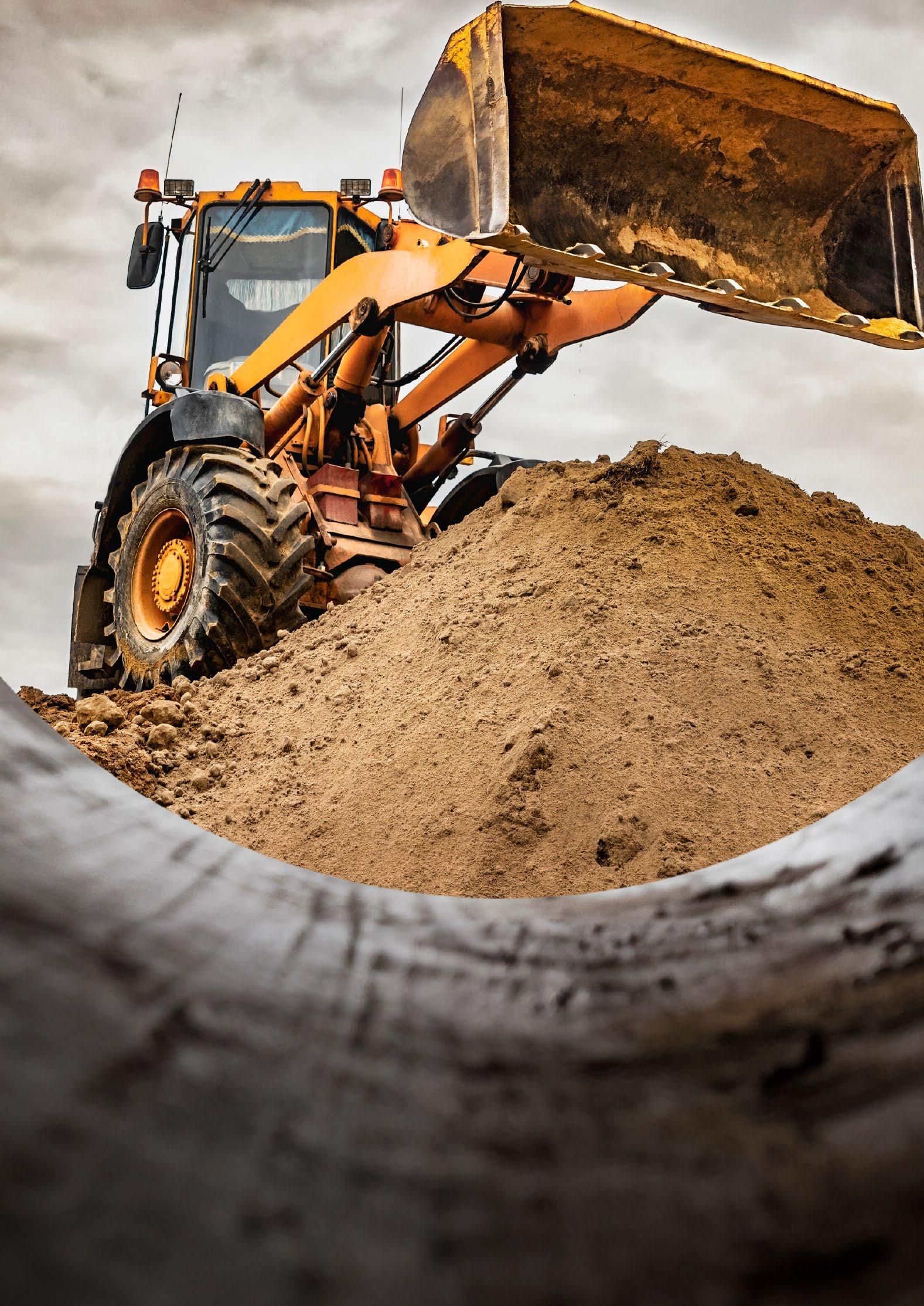
strengthen the company’s Chinese portfolio with full control over the Julong Copper Mine. Zijin Mining will continue to increase its production capacity and evolve its operations, whilst maintaining a focus on the environment and communities, solidifying its position as a leading mining company committed to a better future. n
